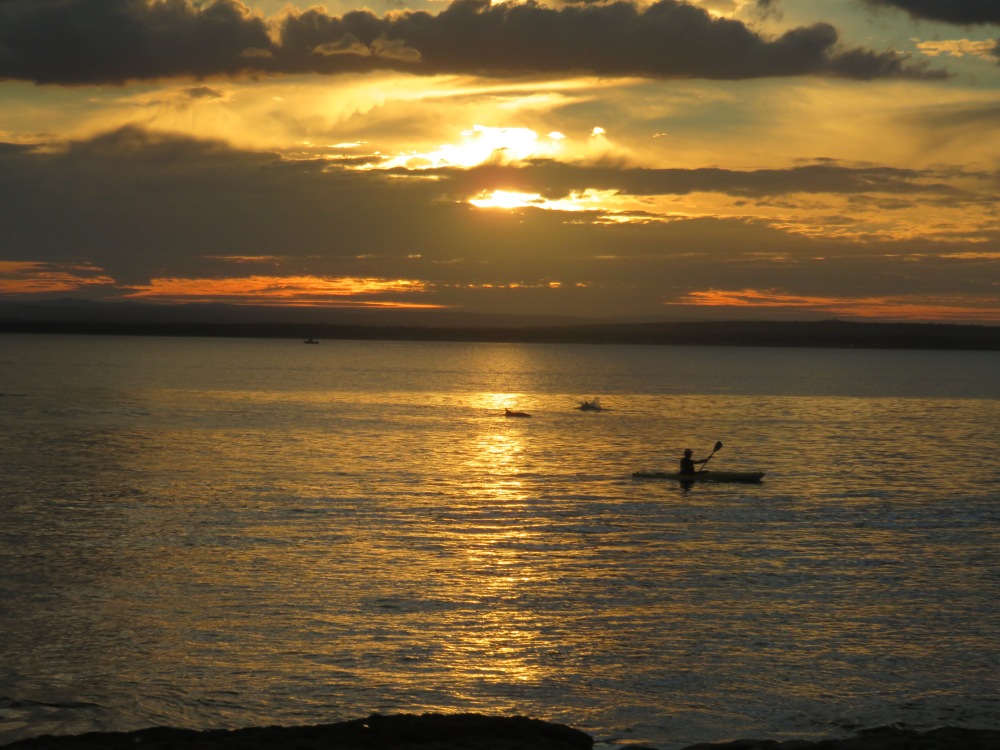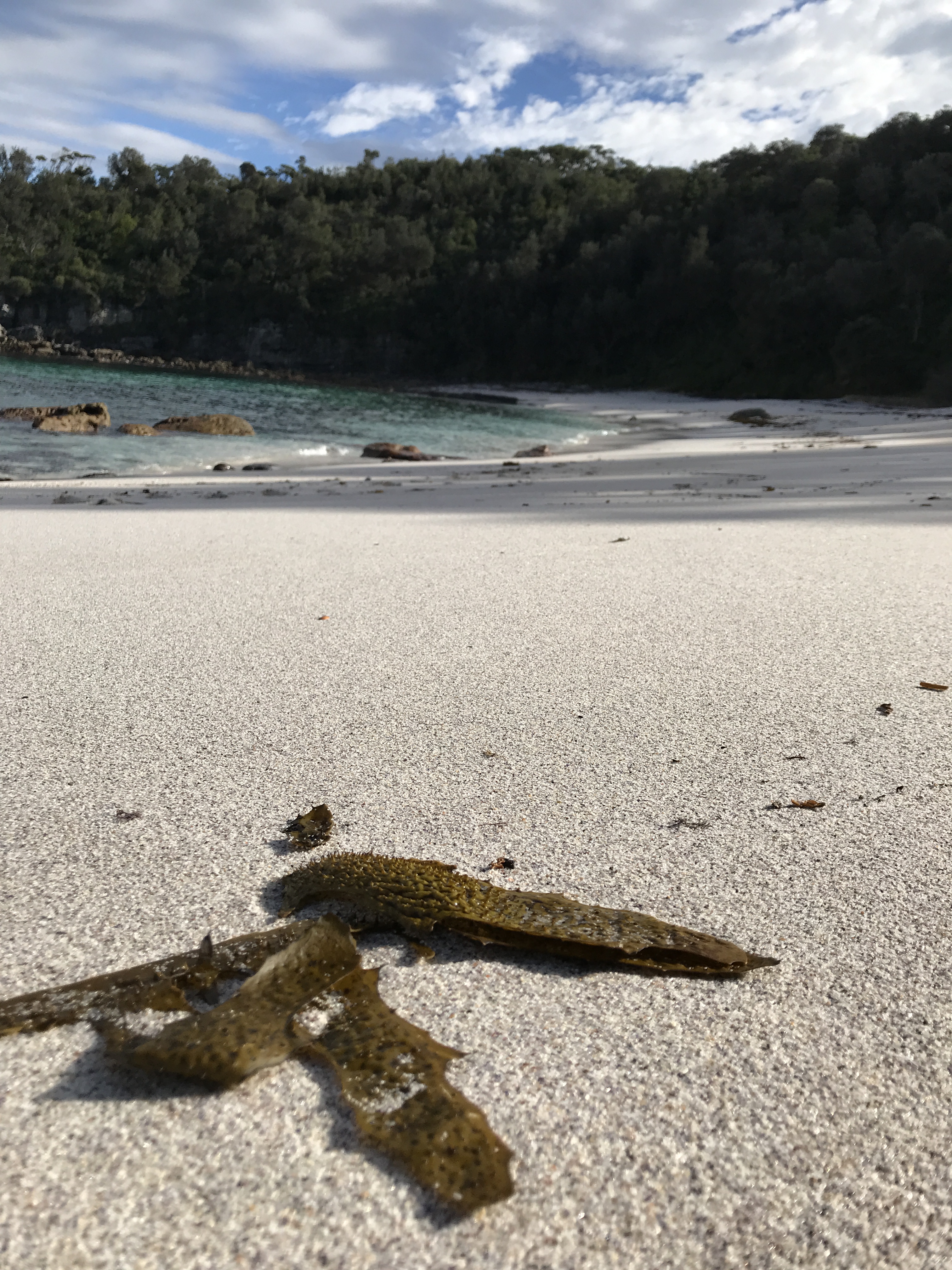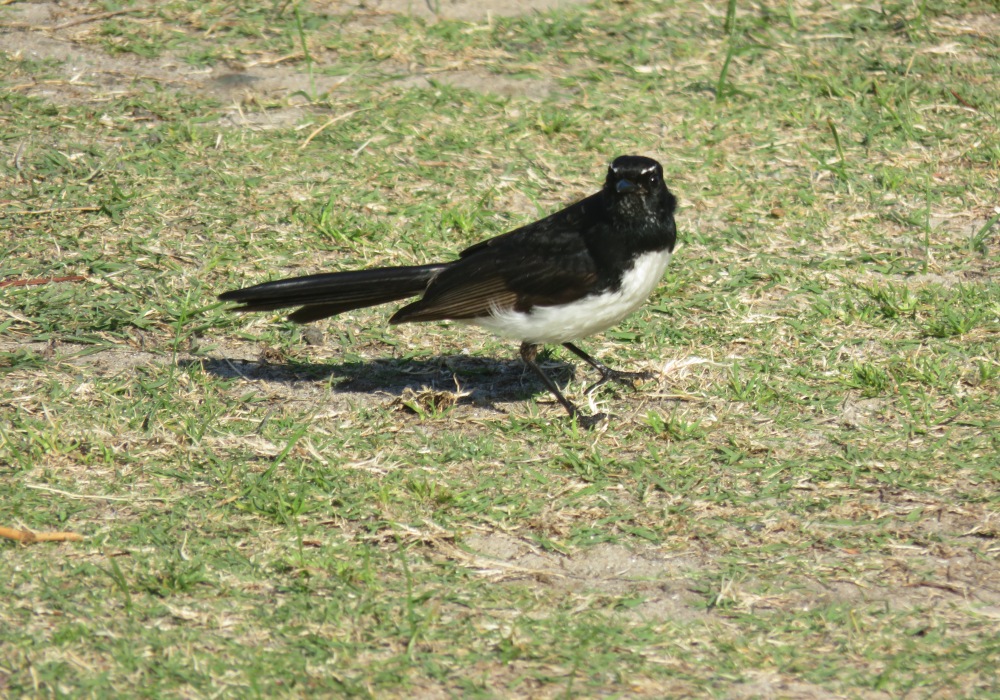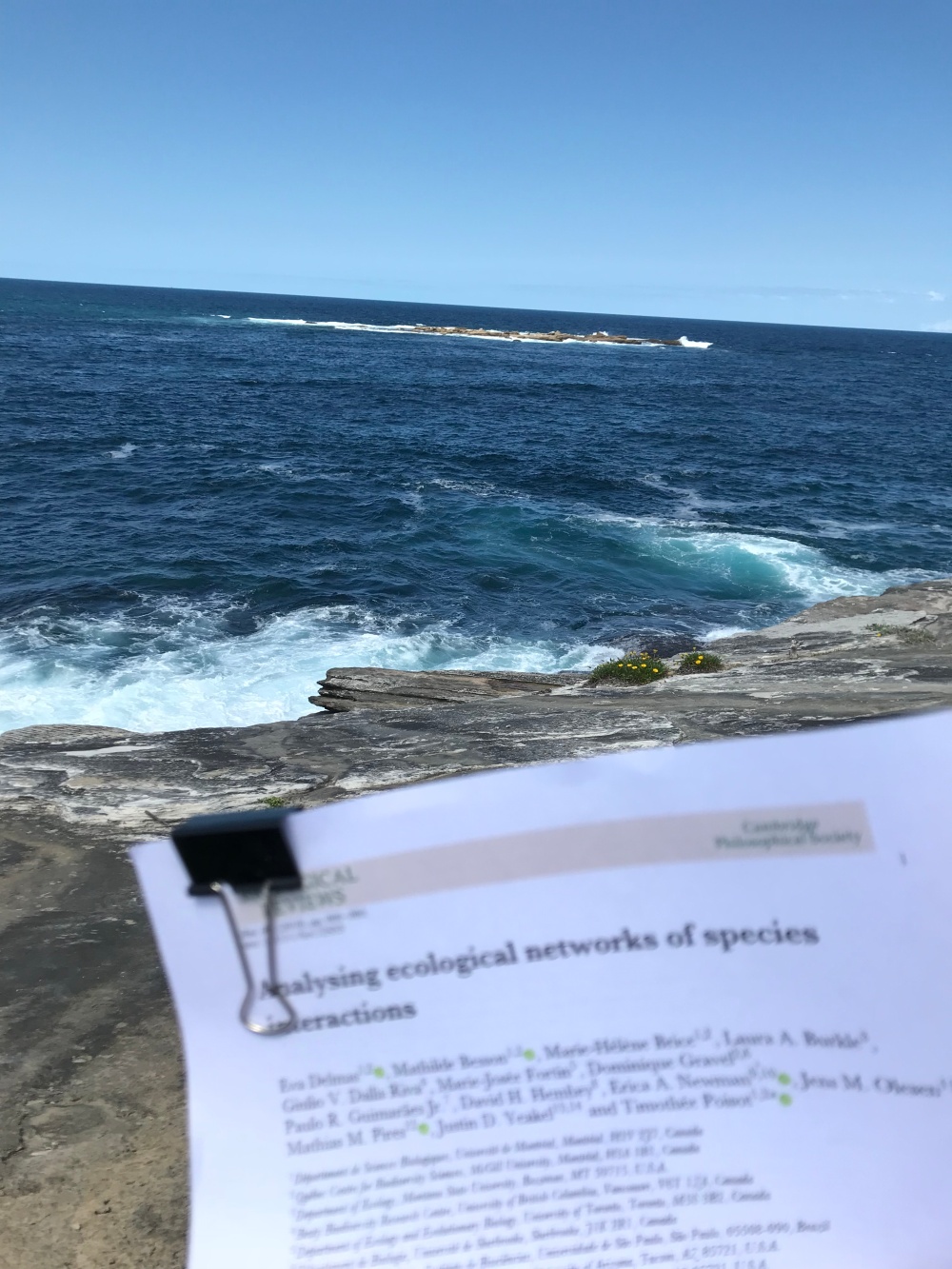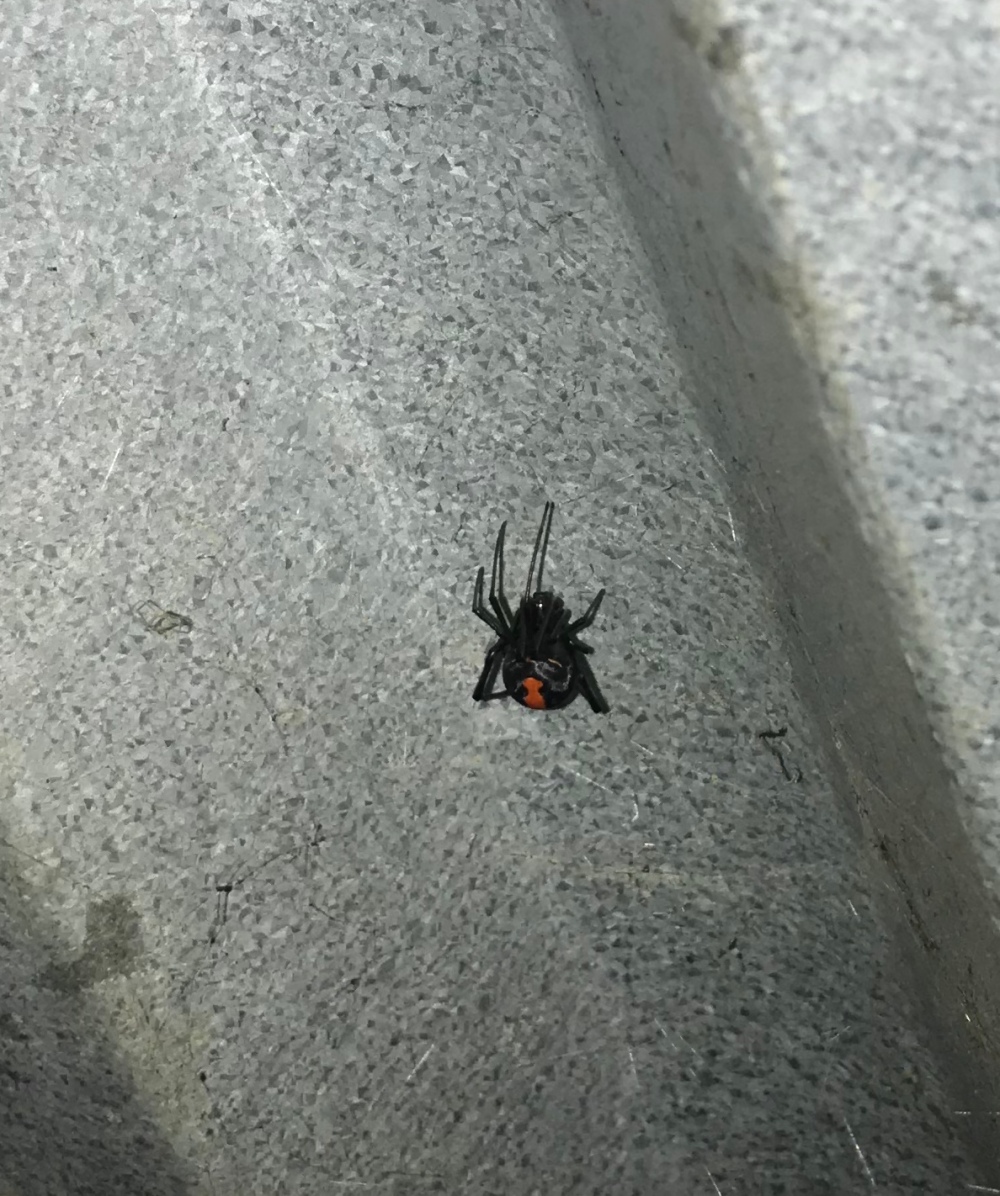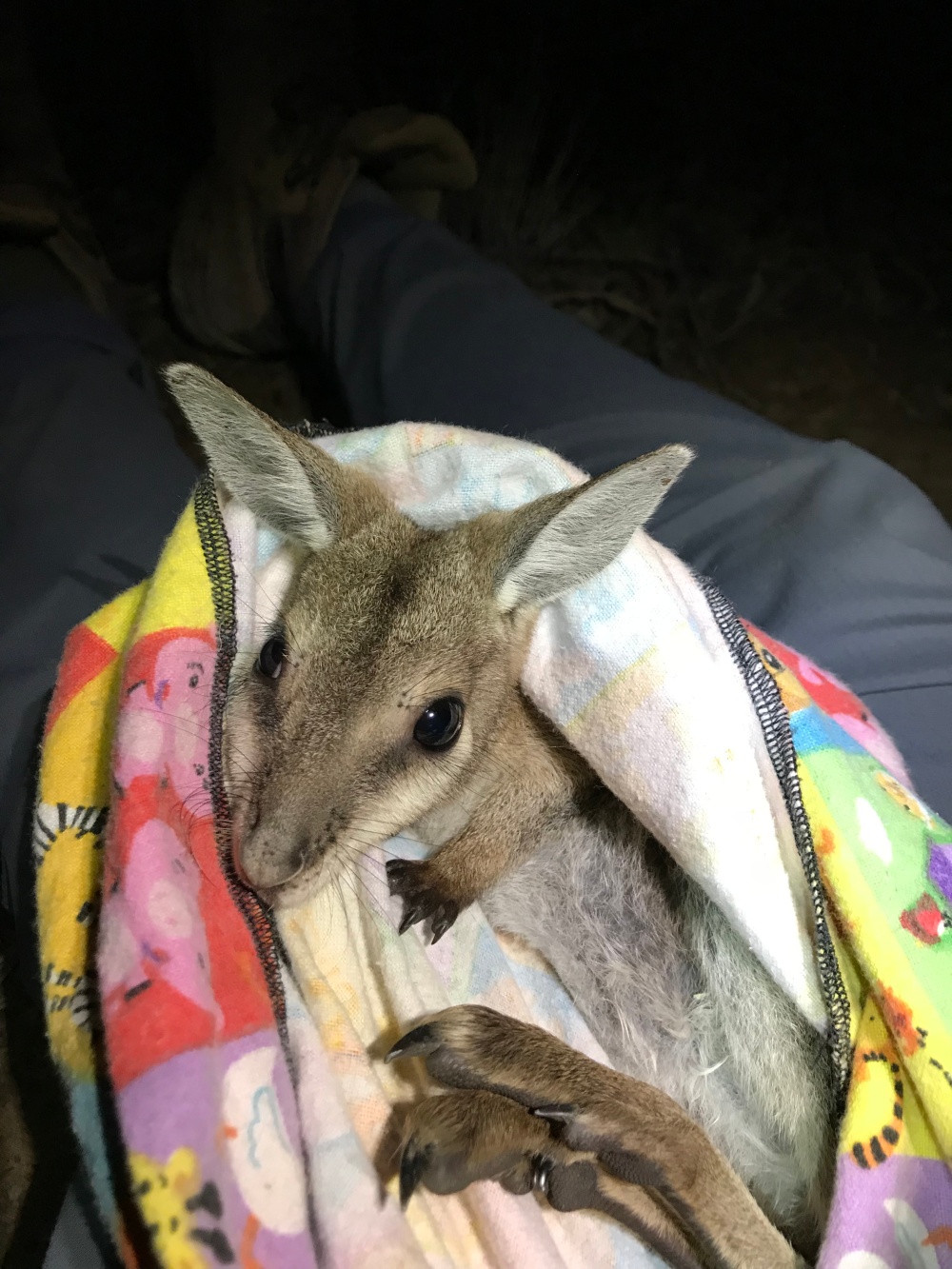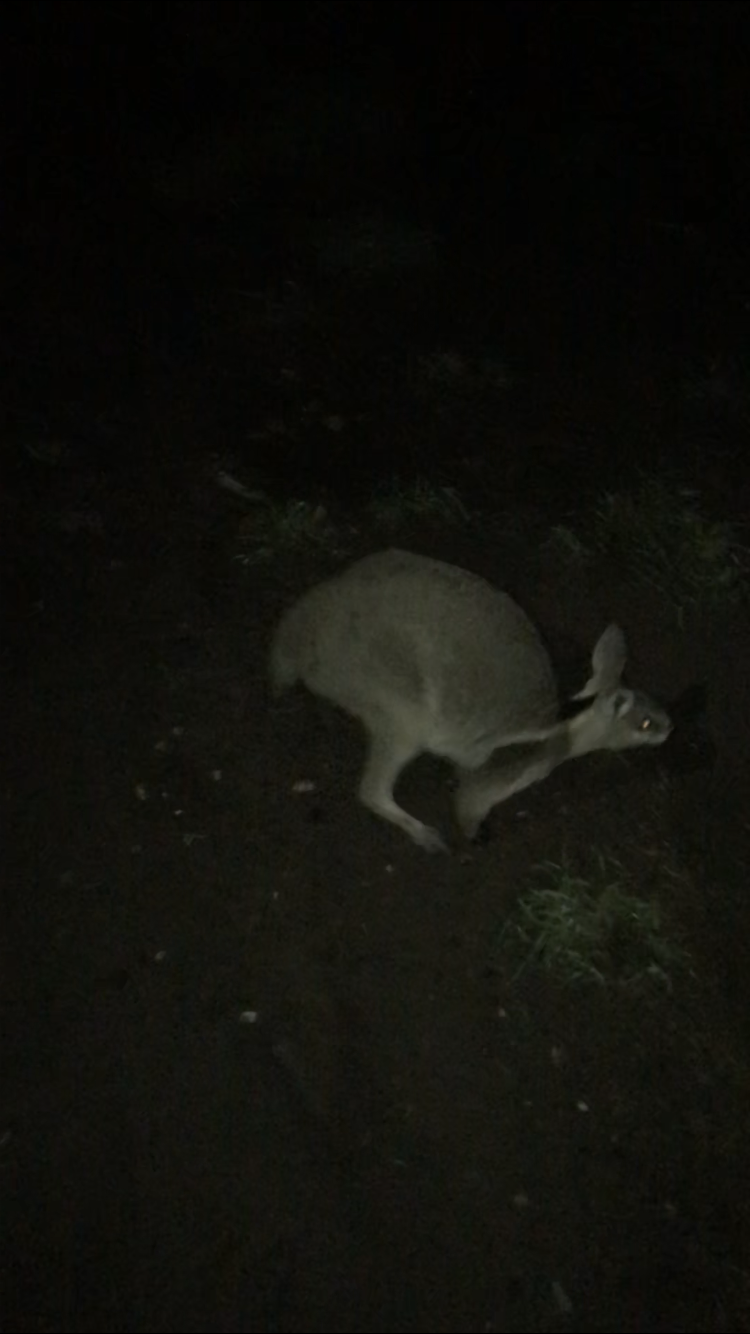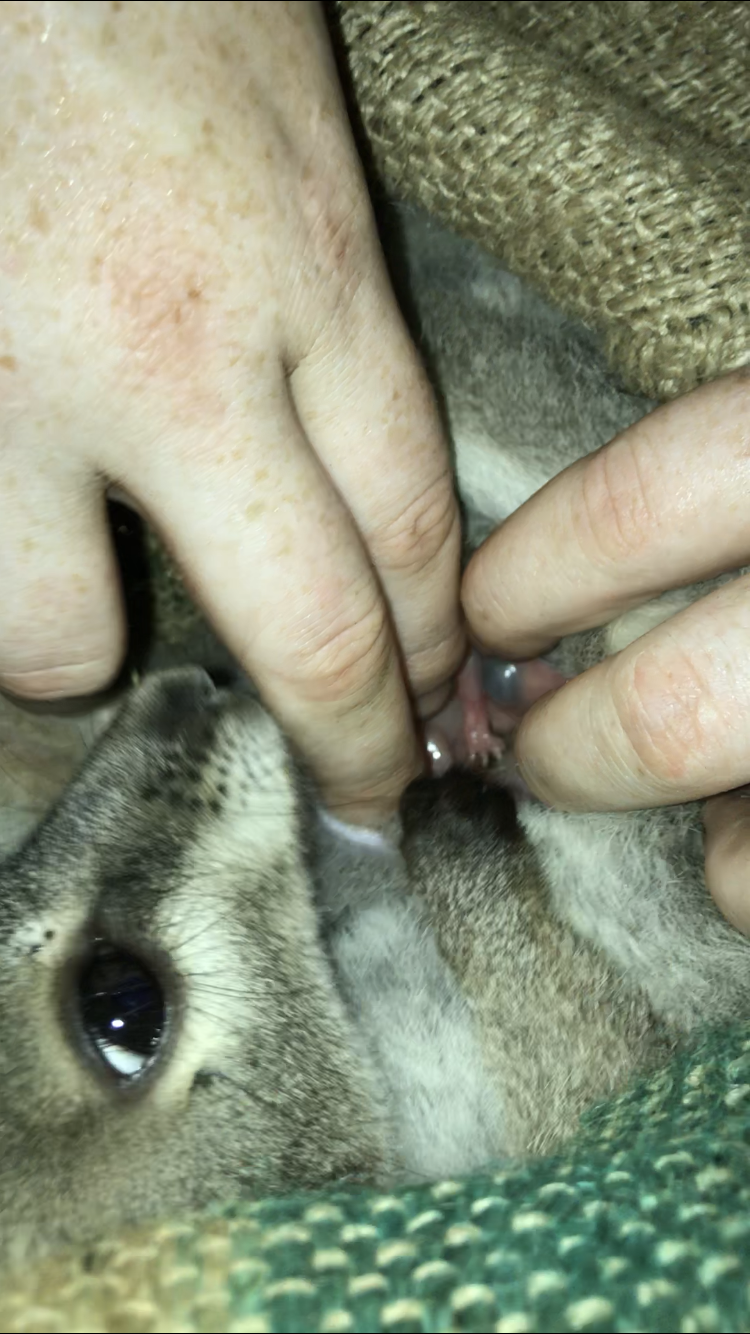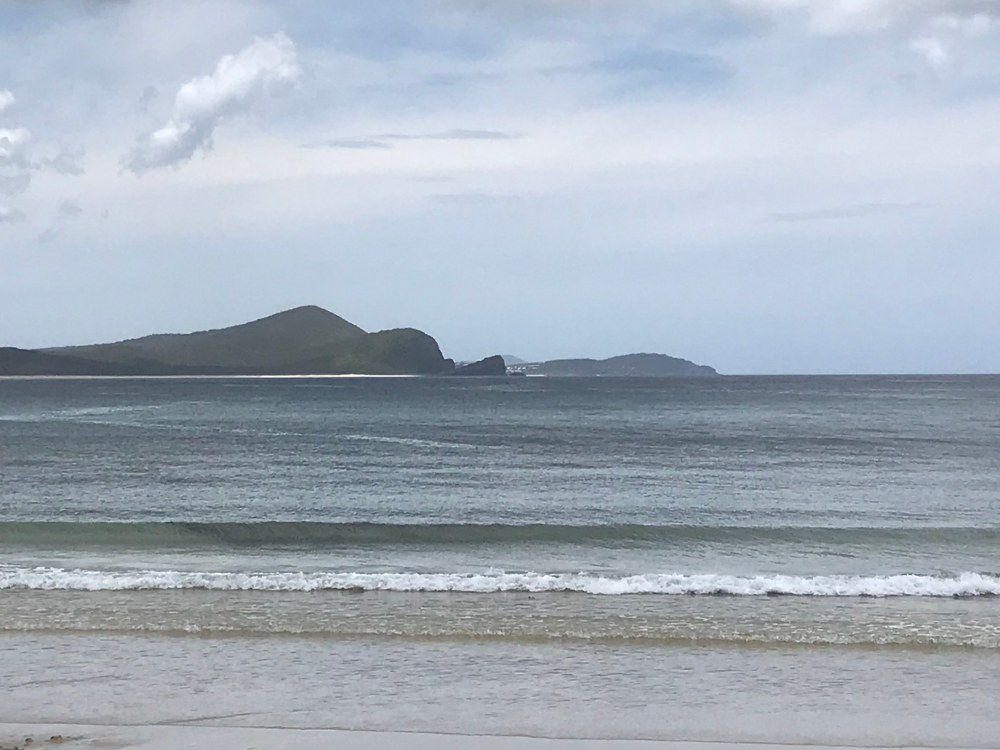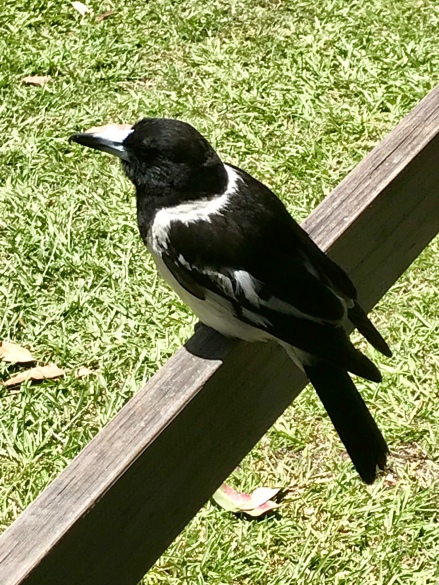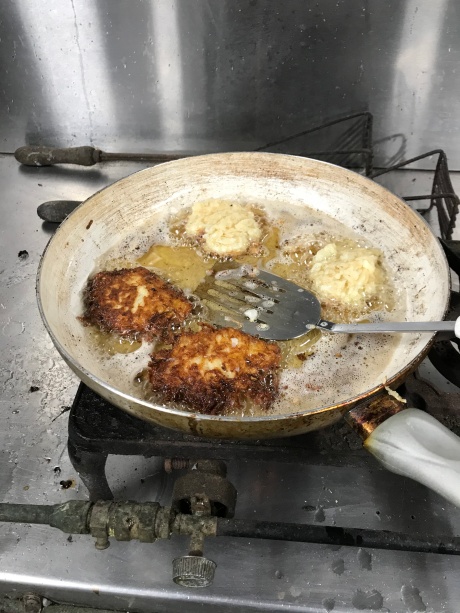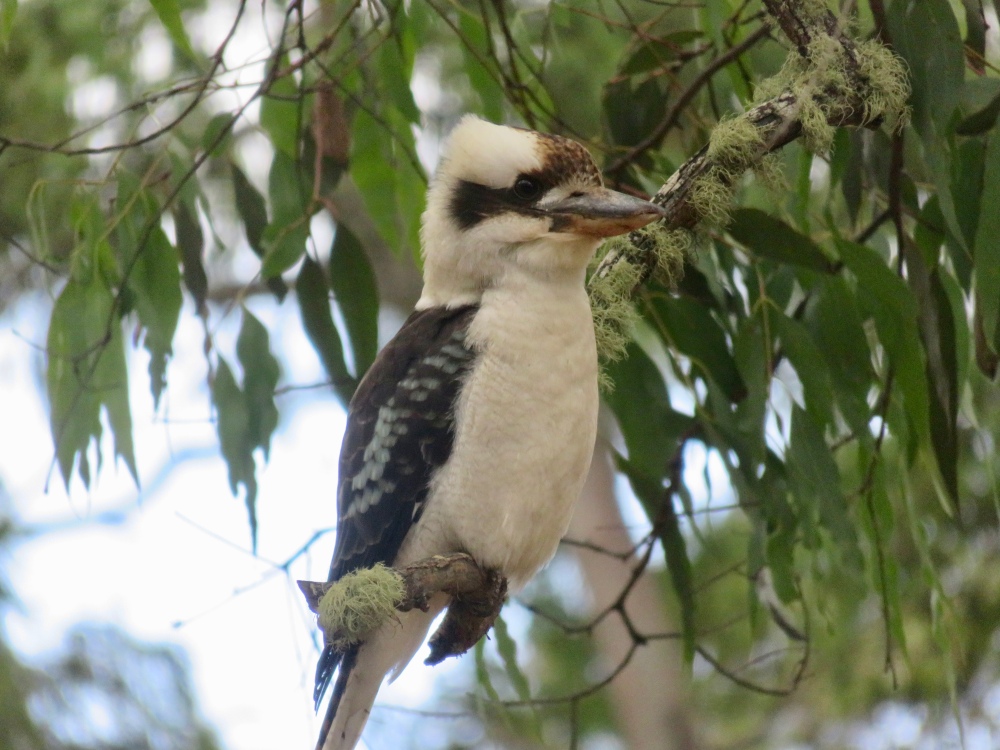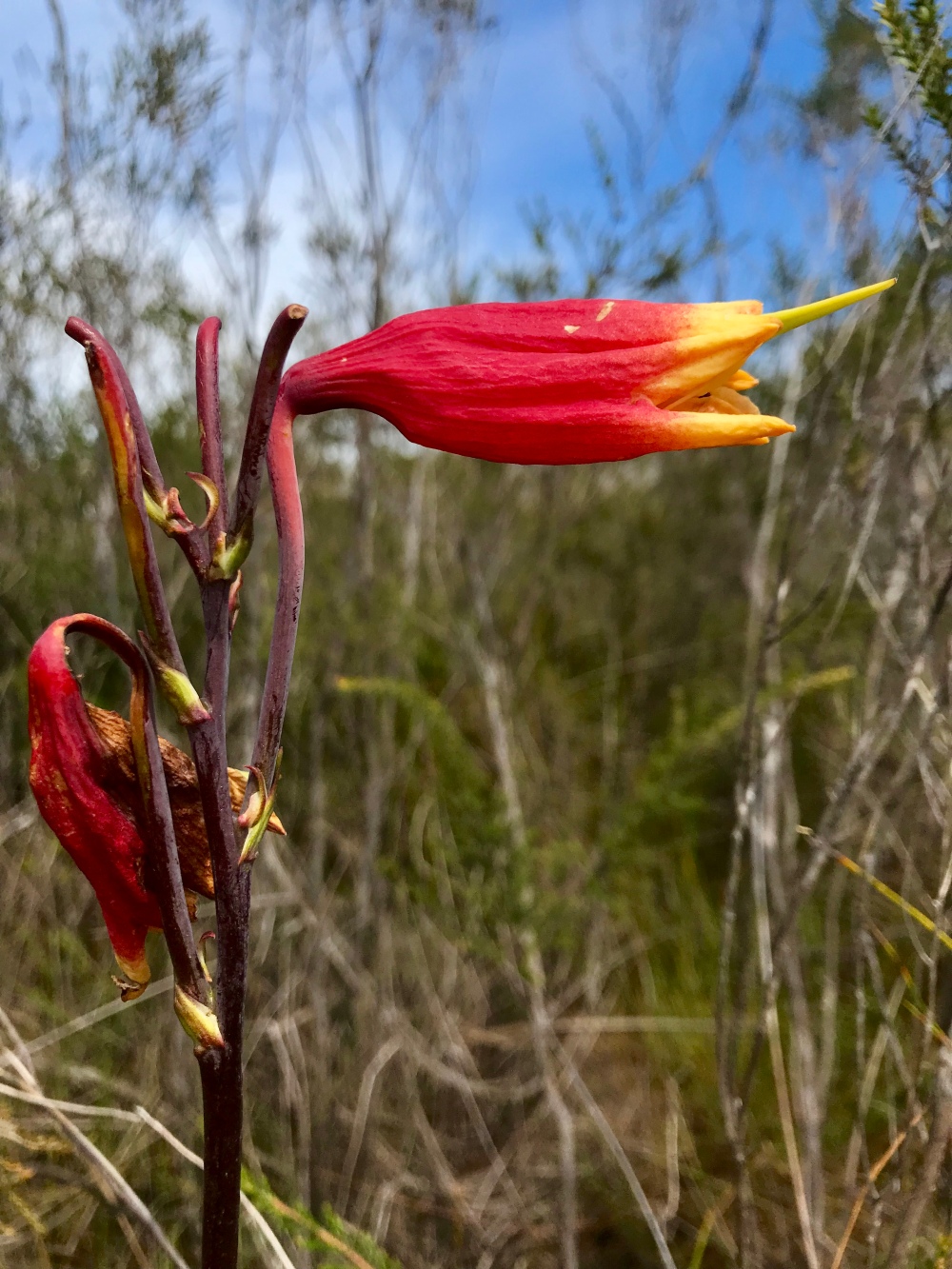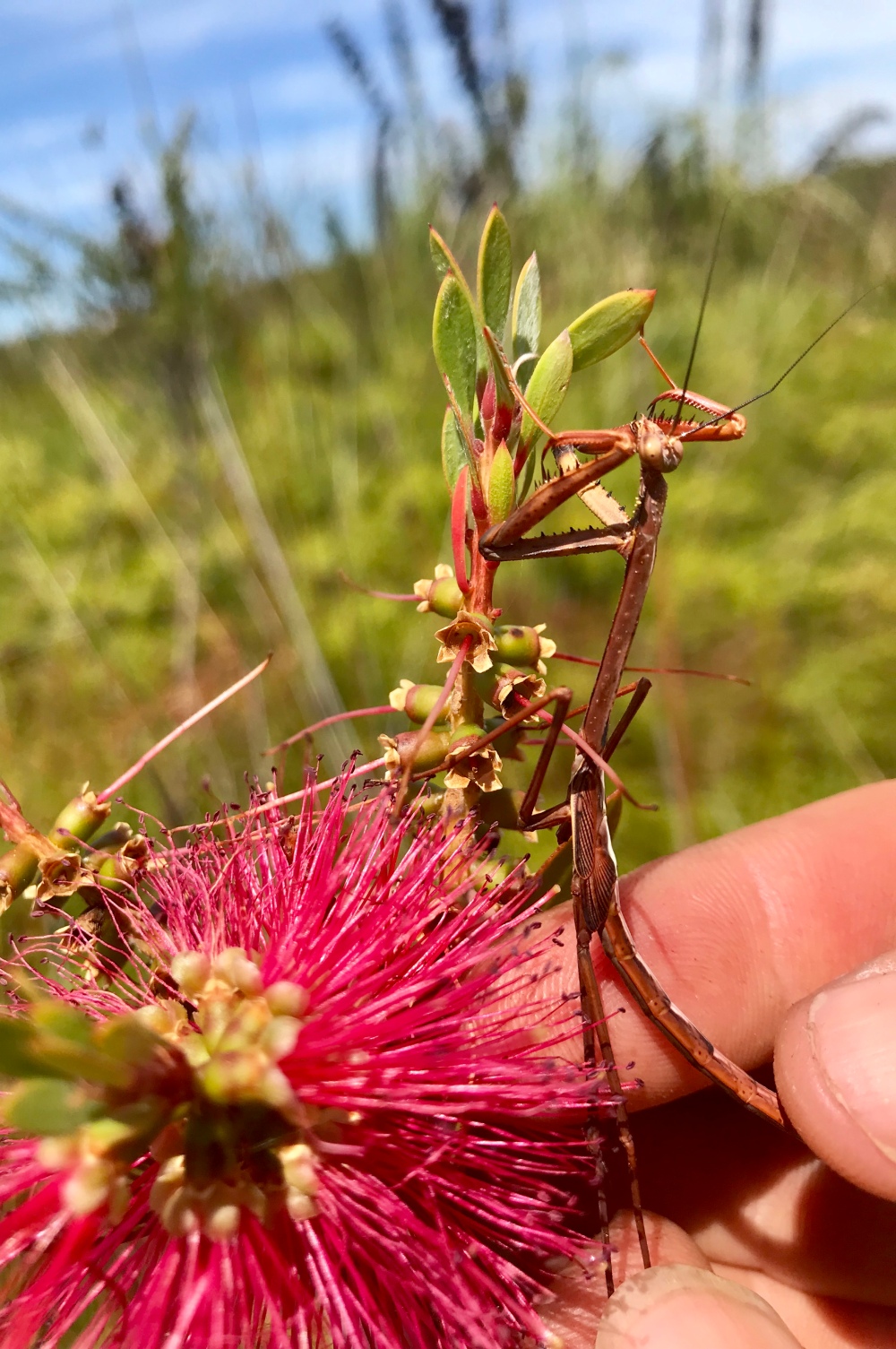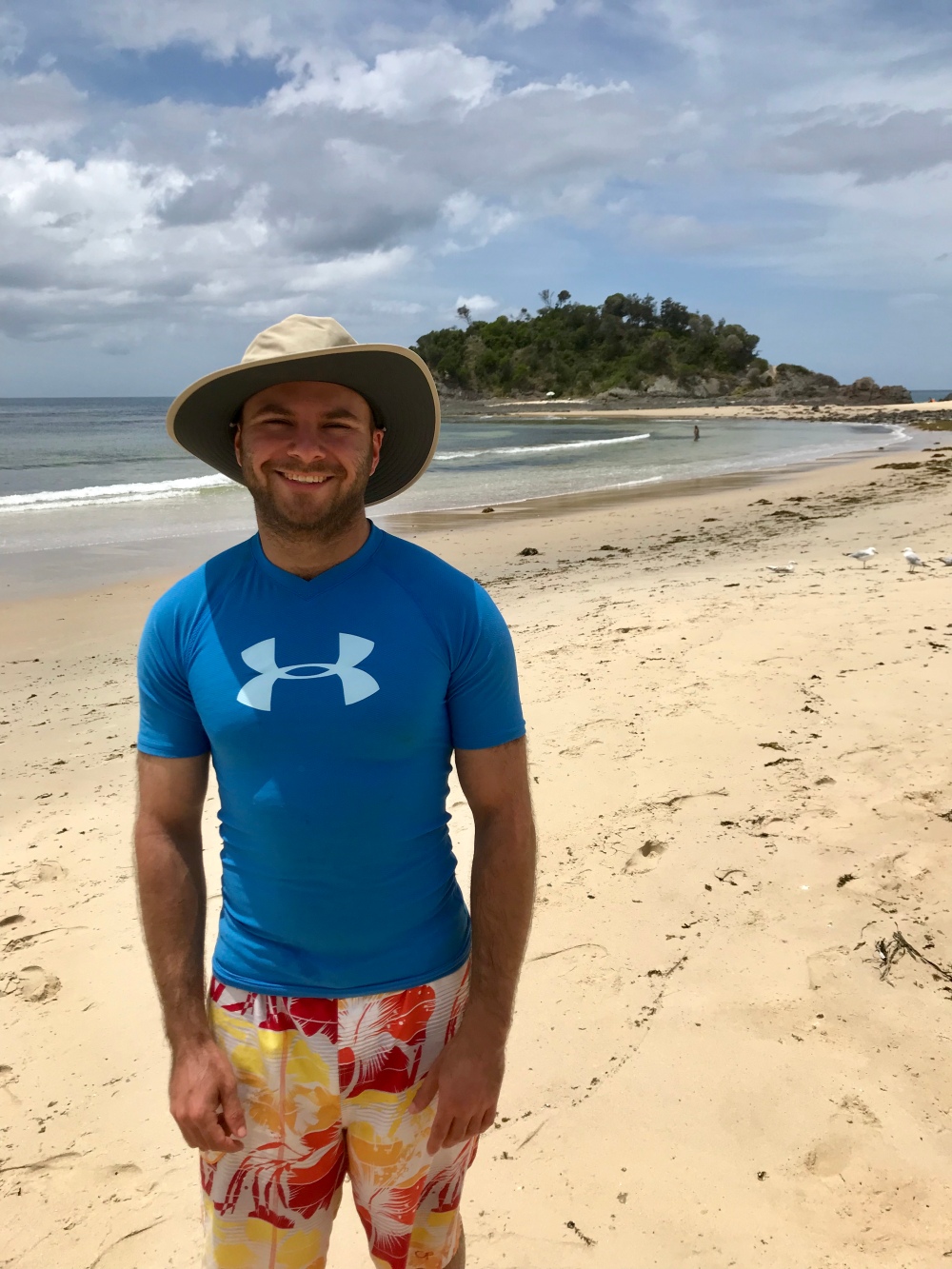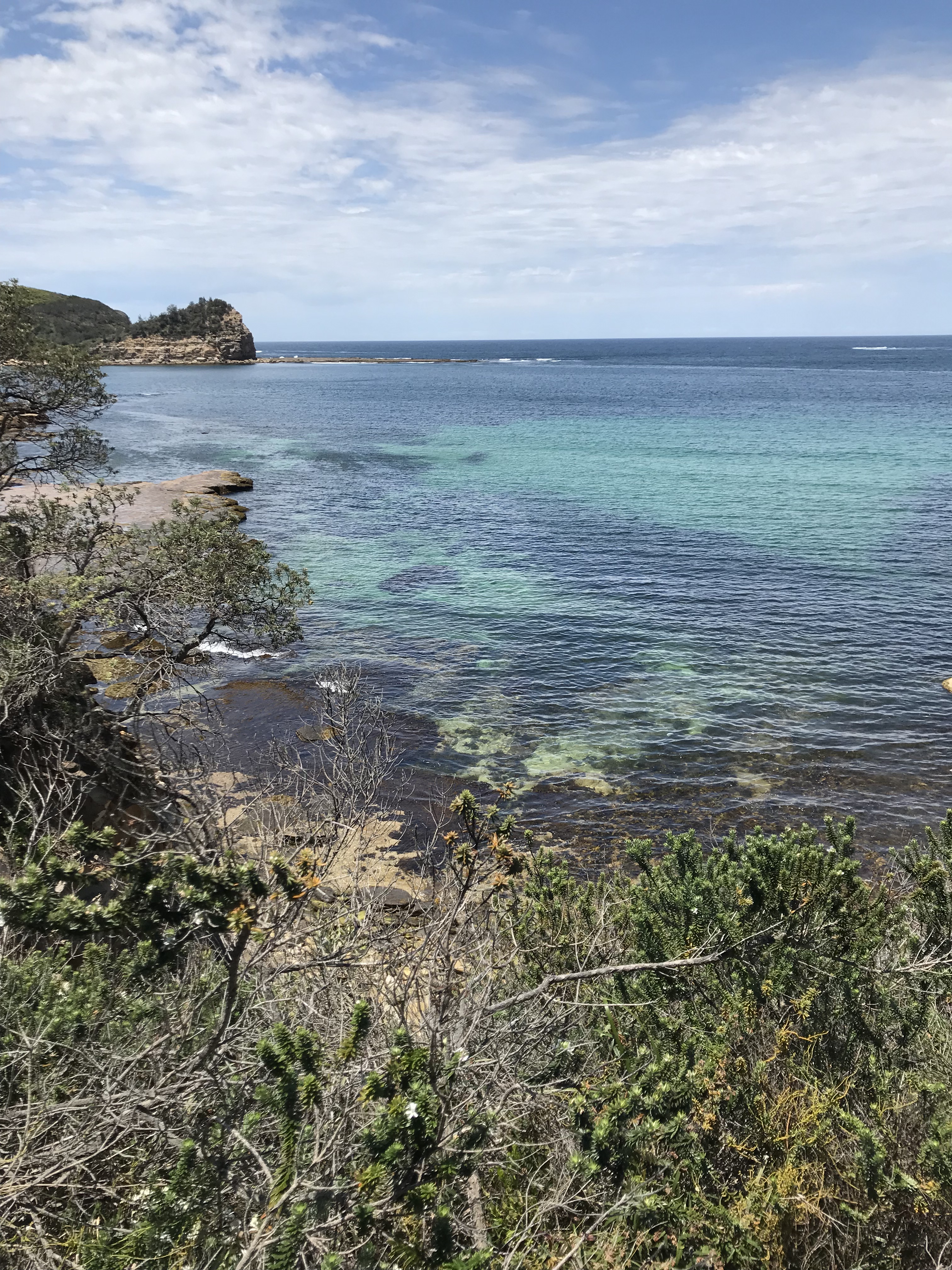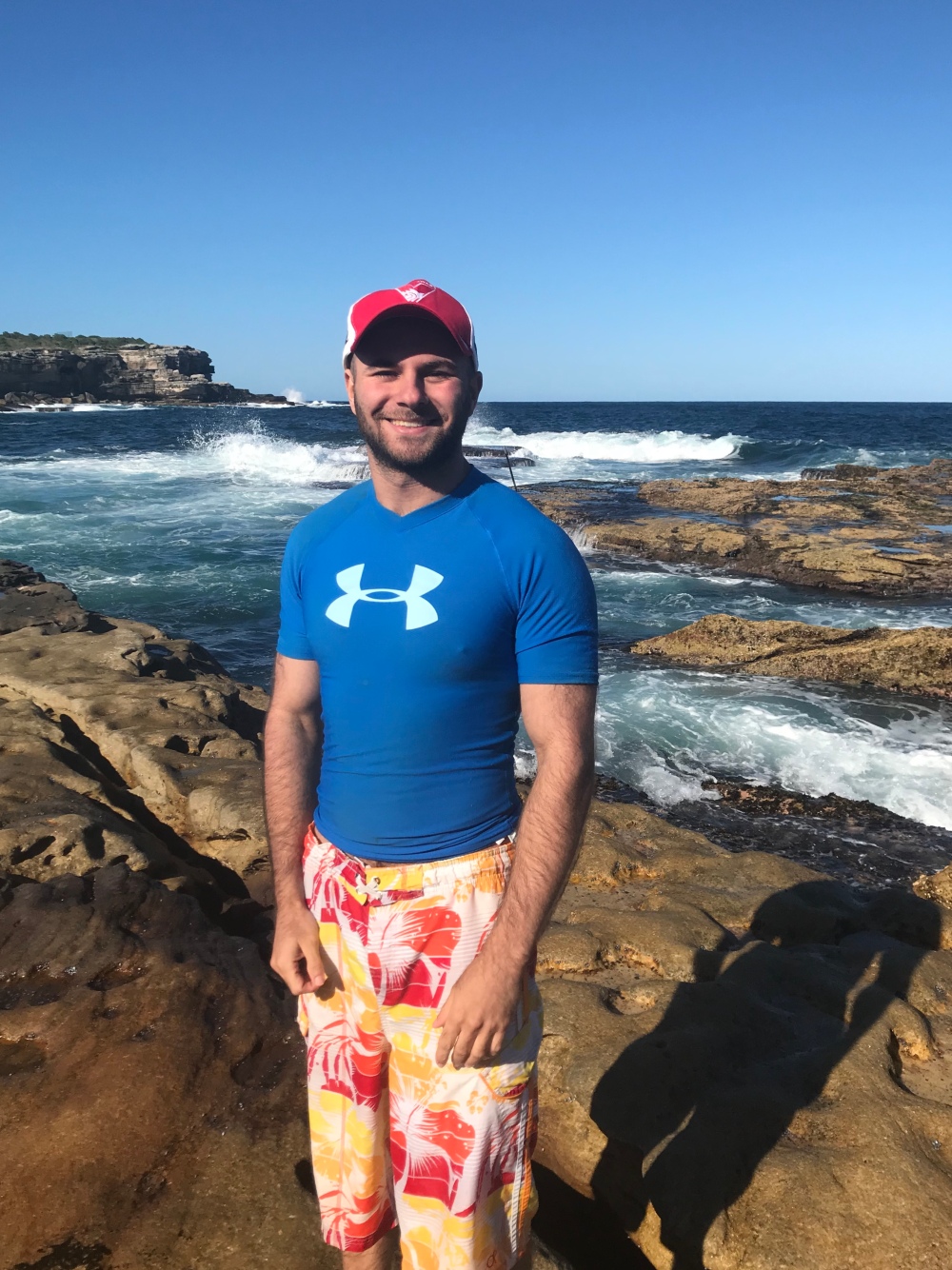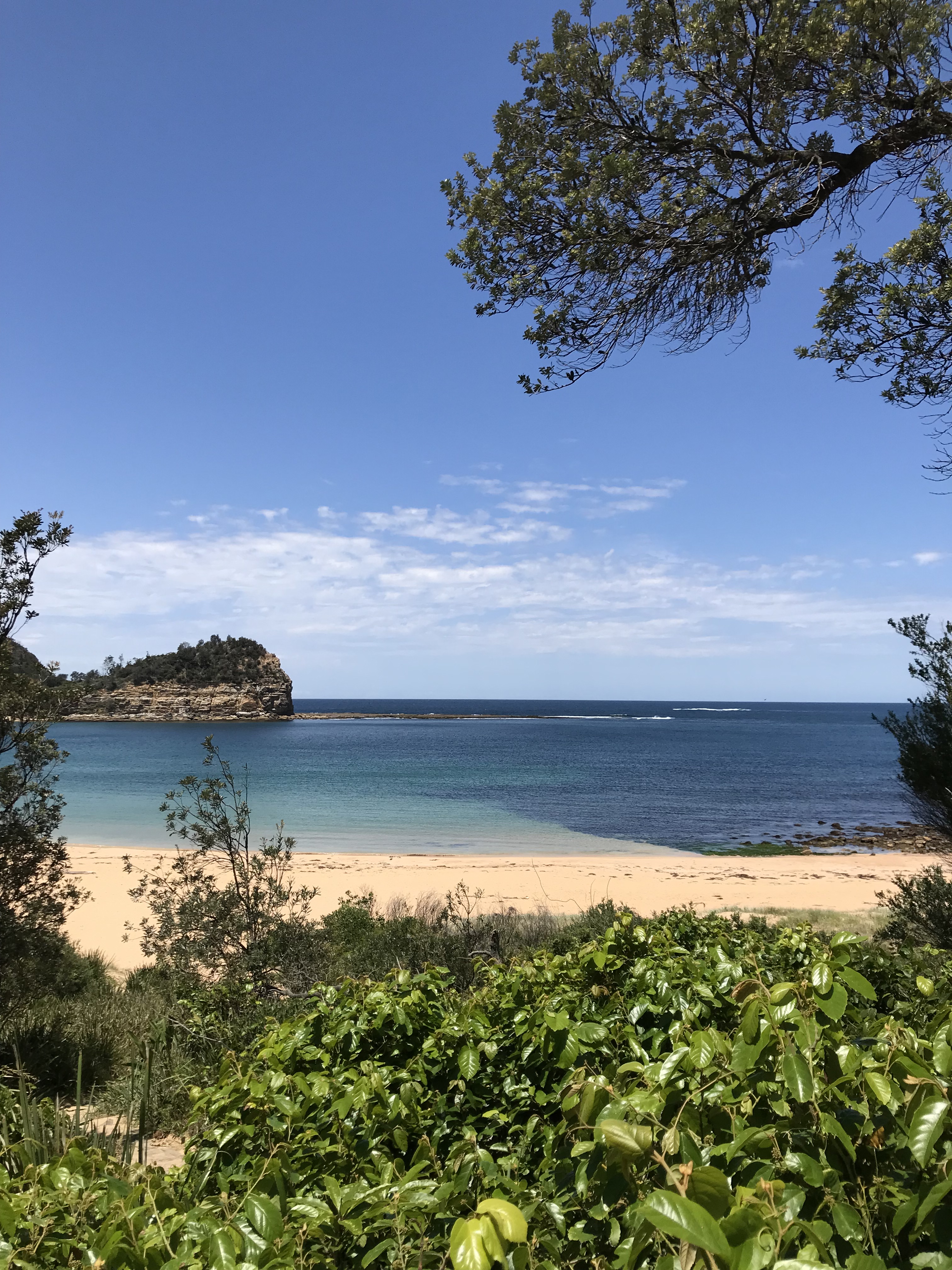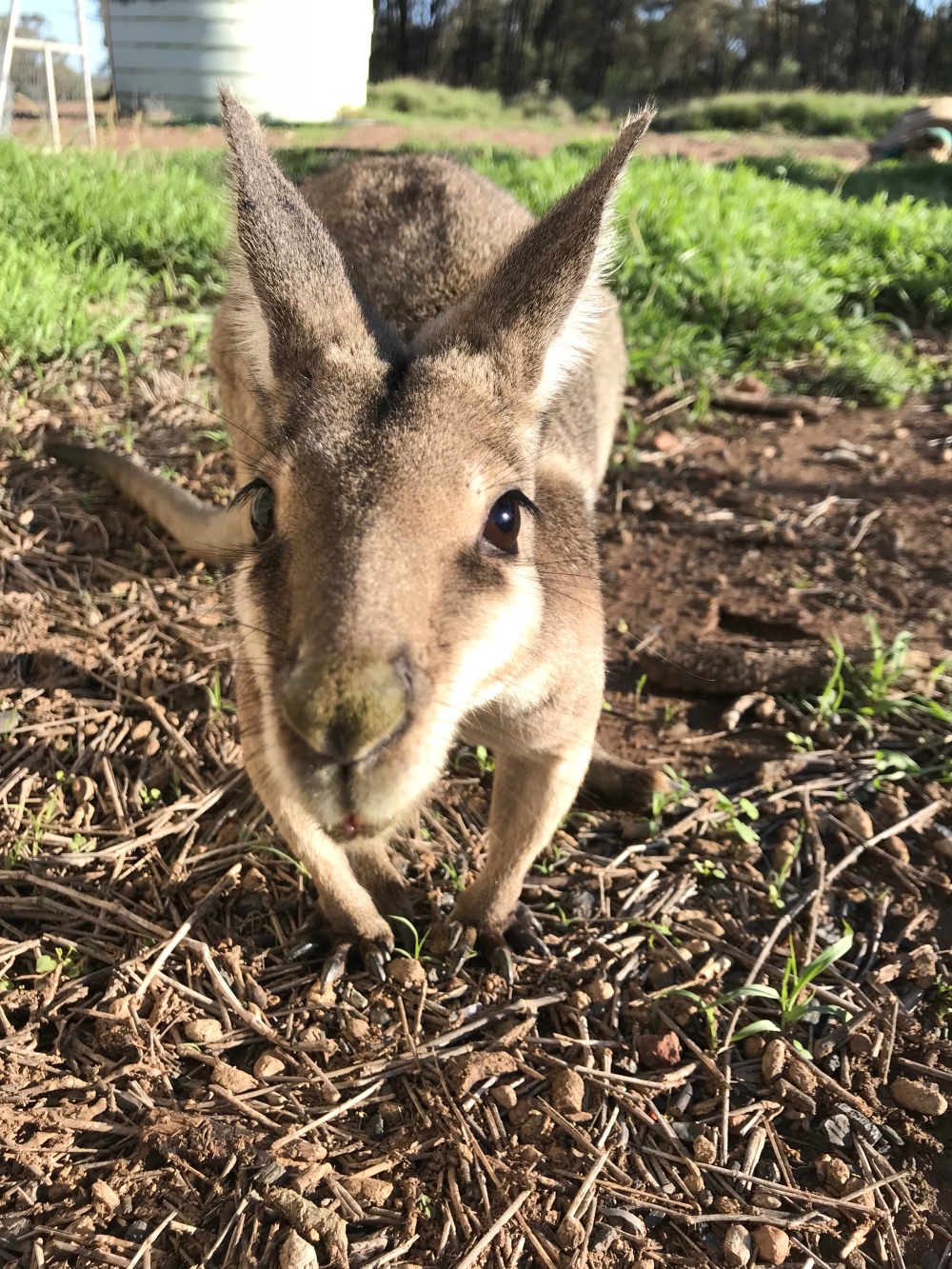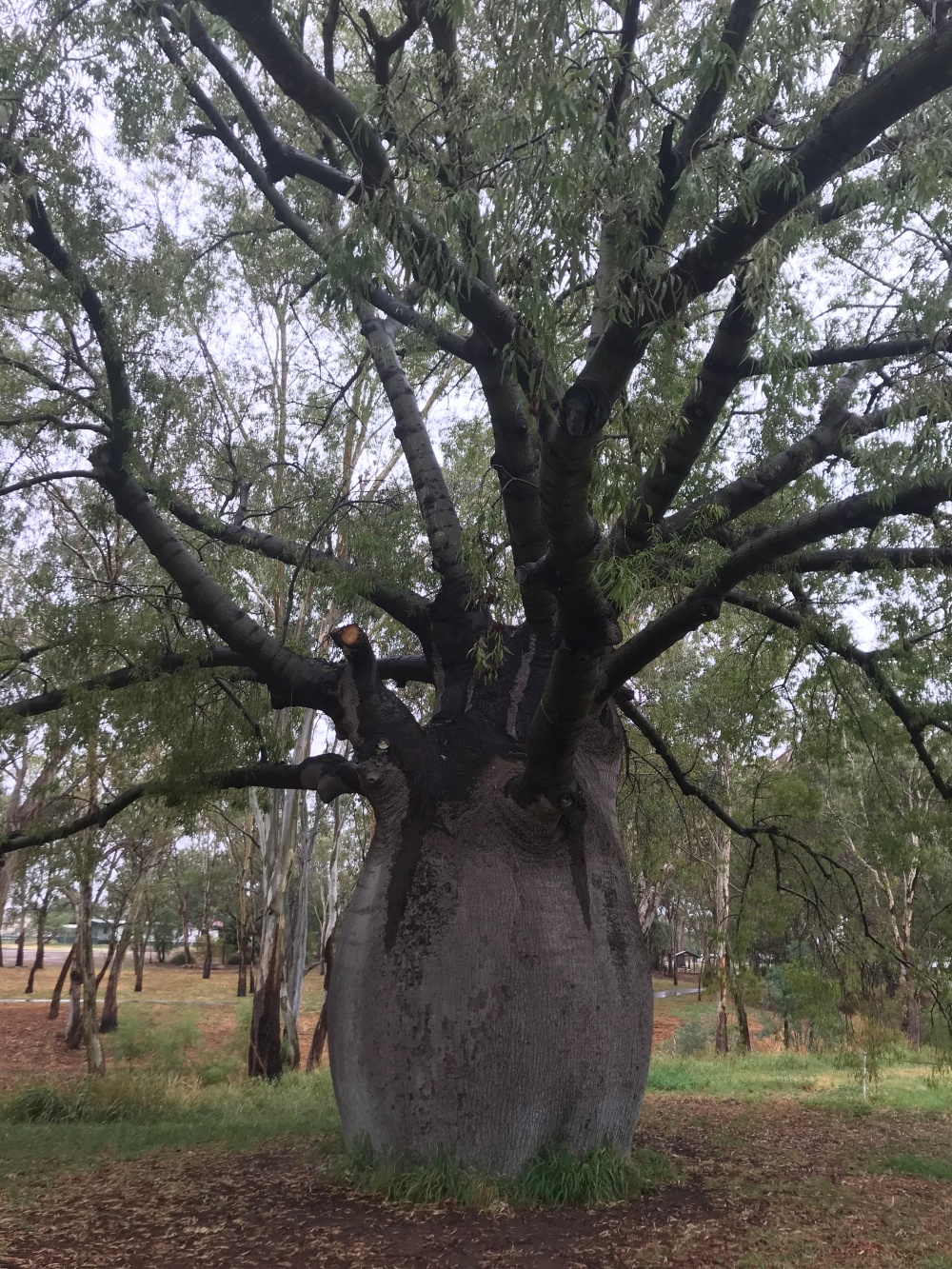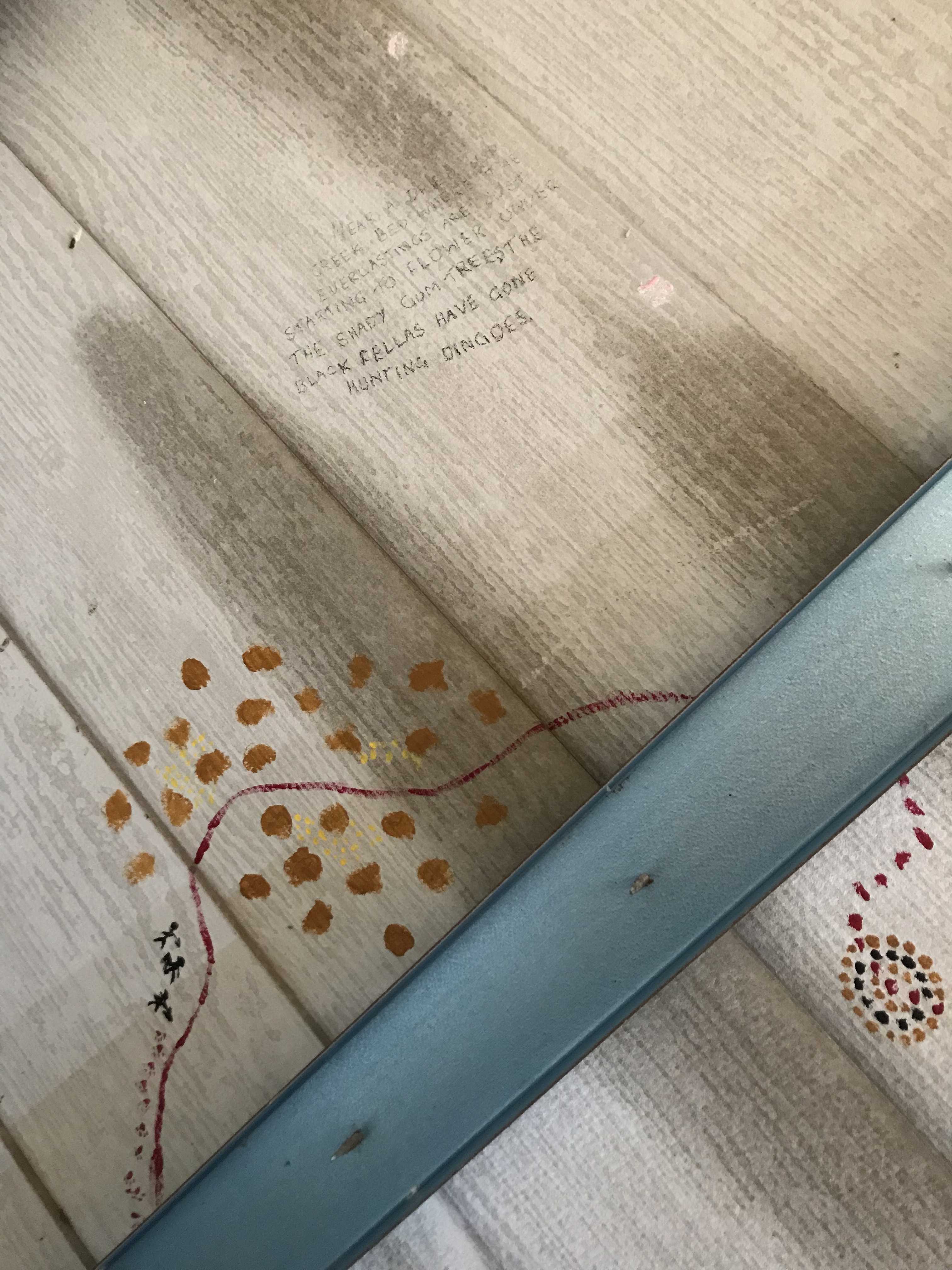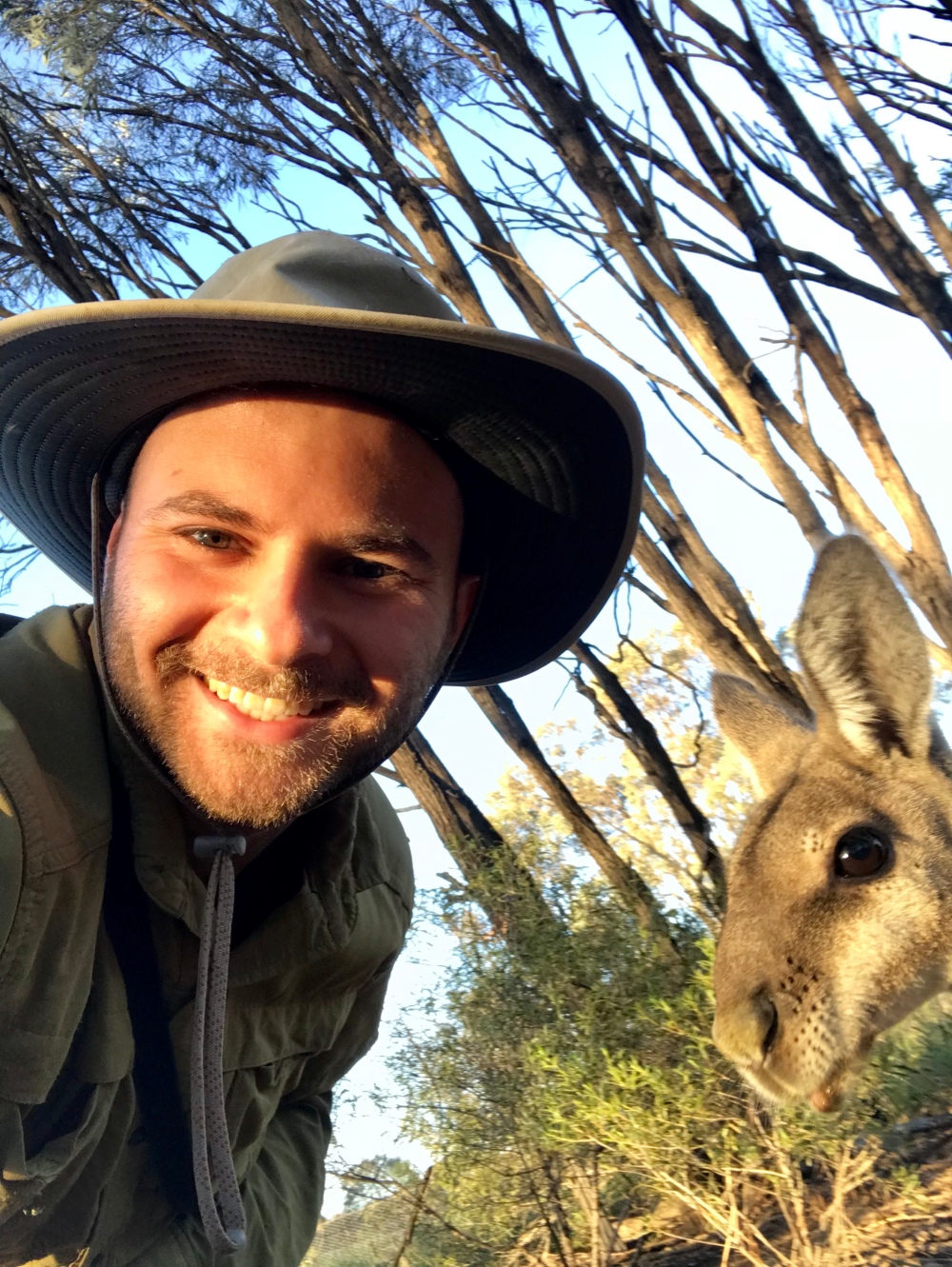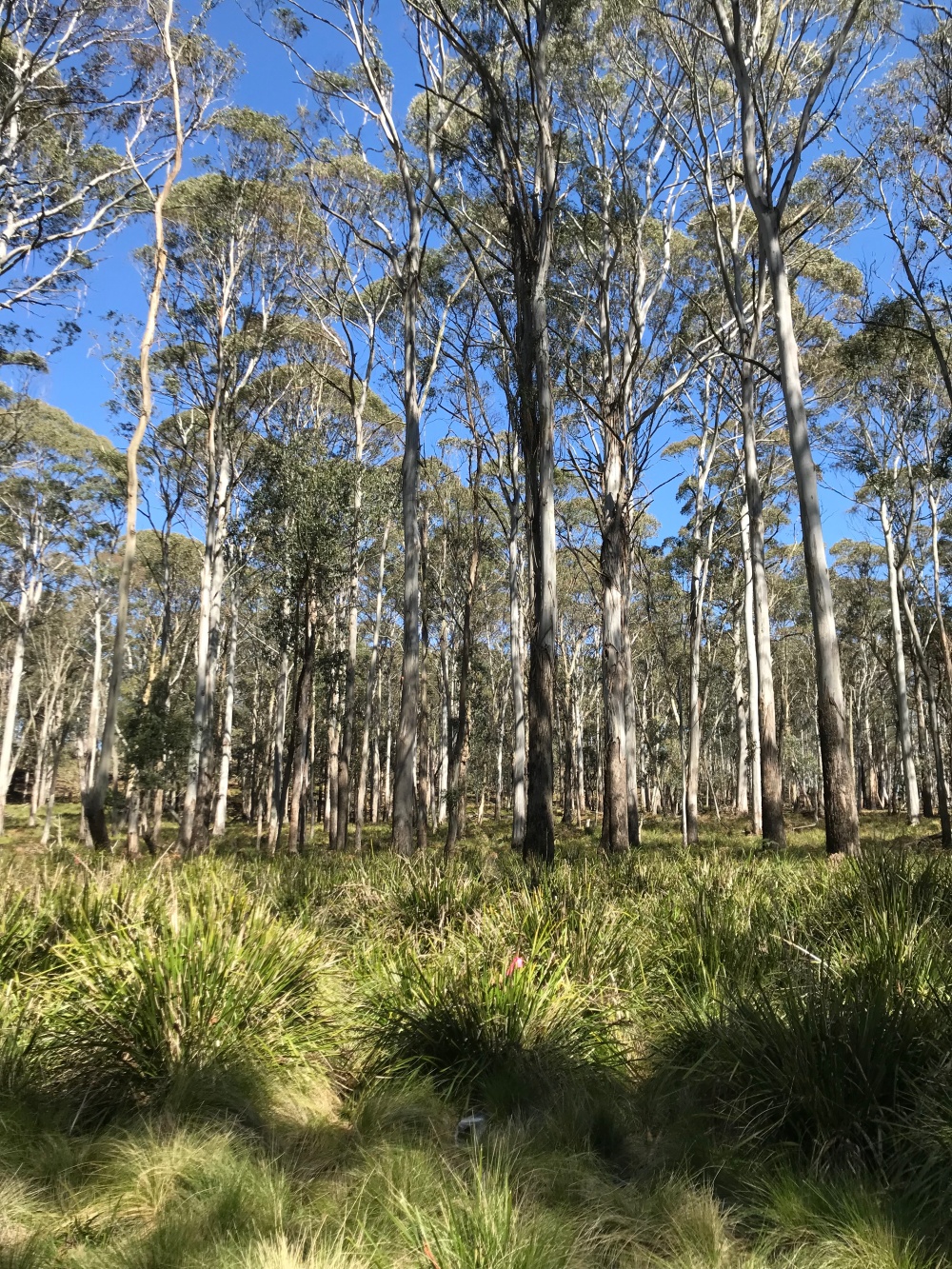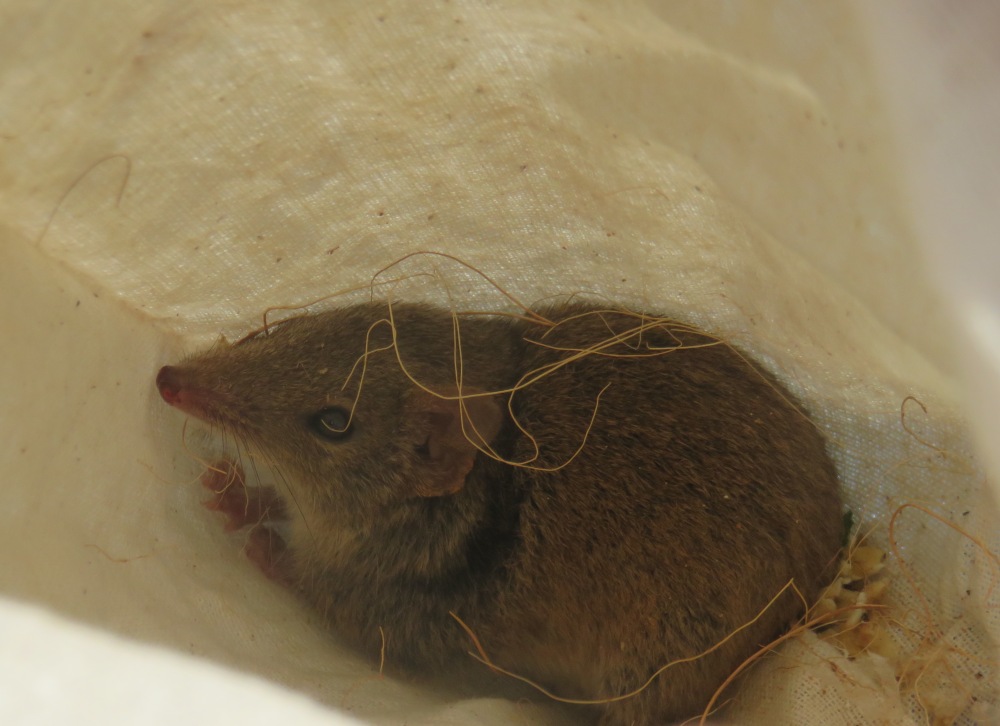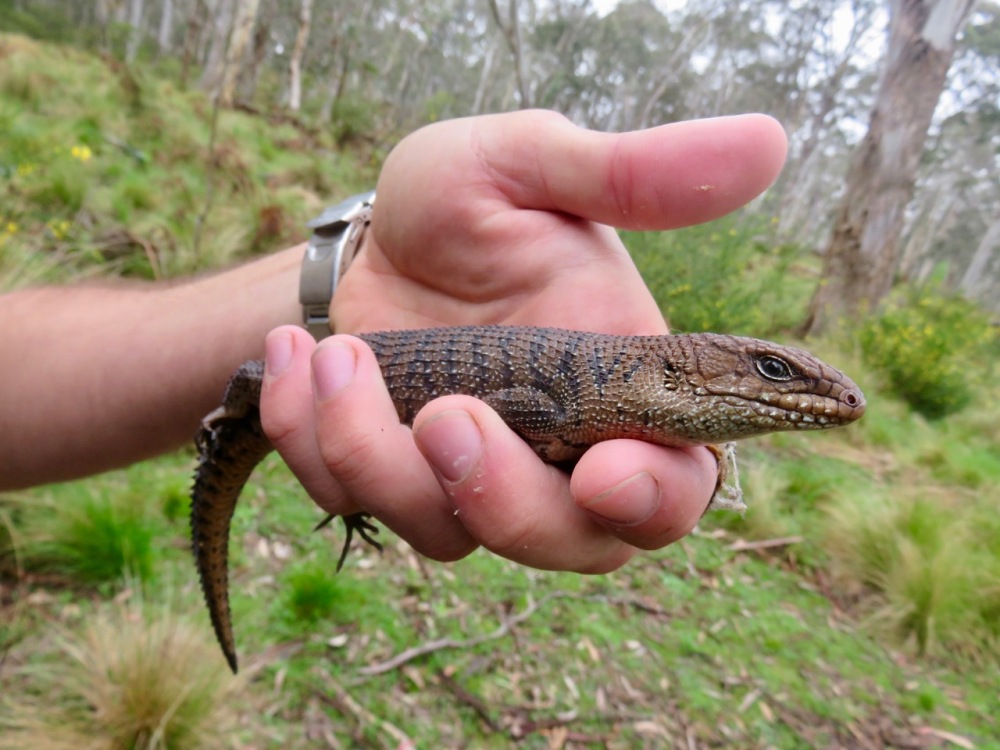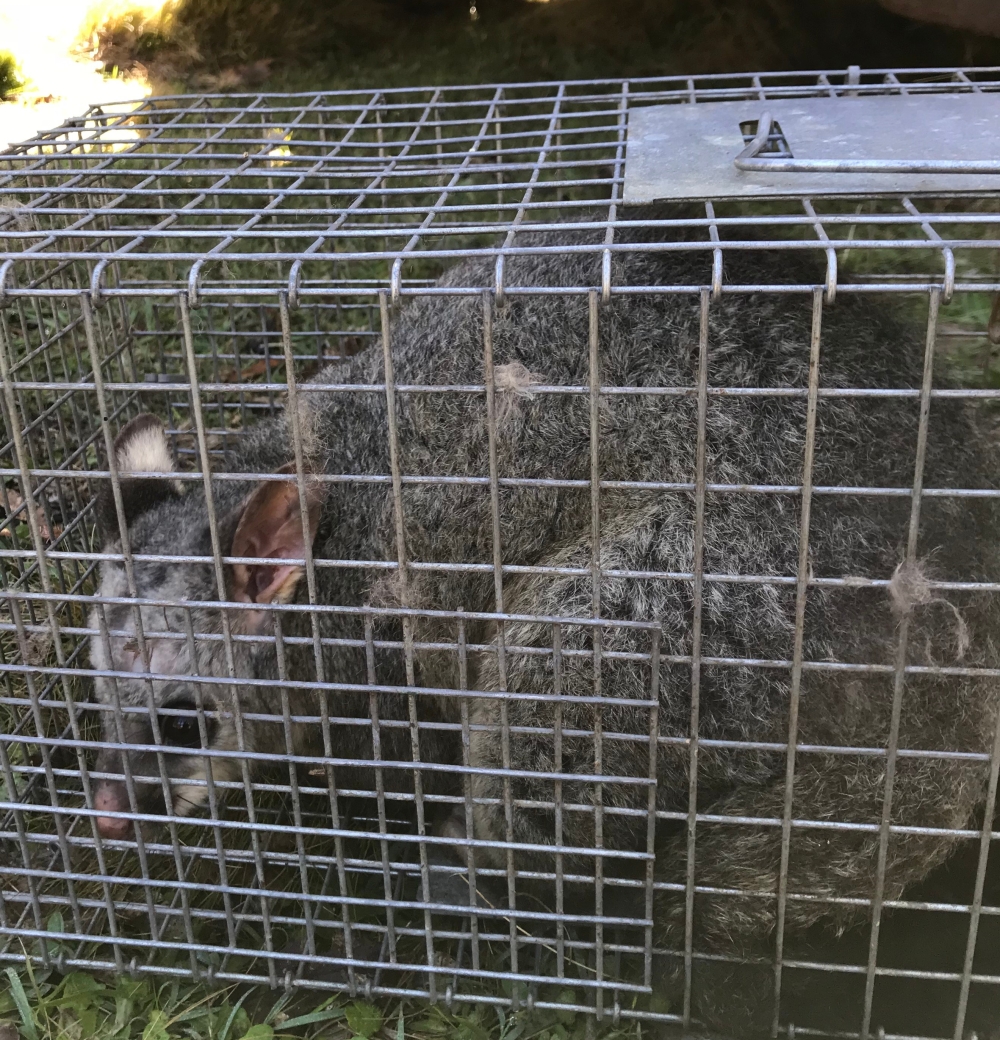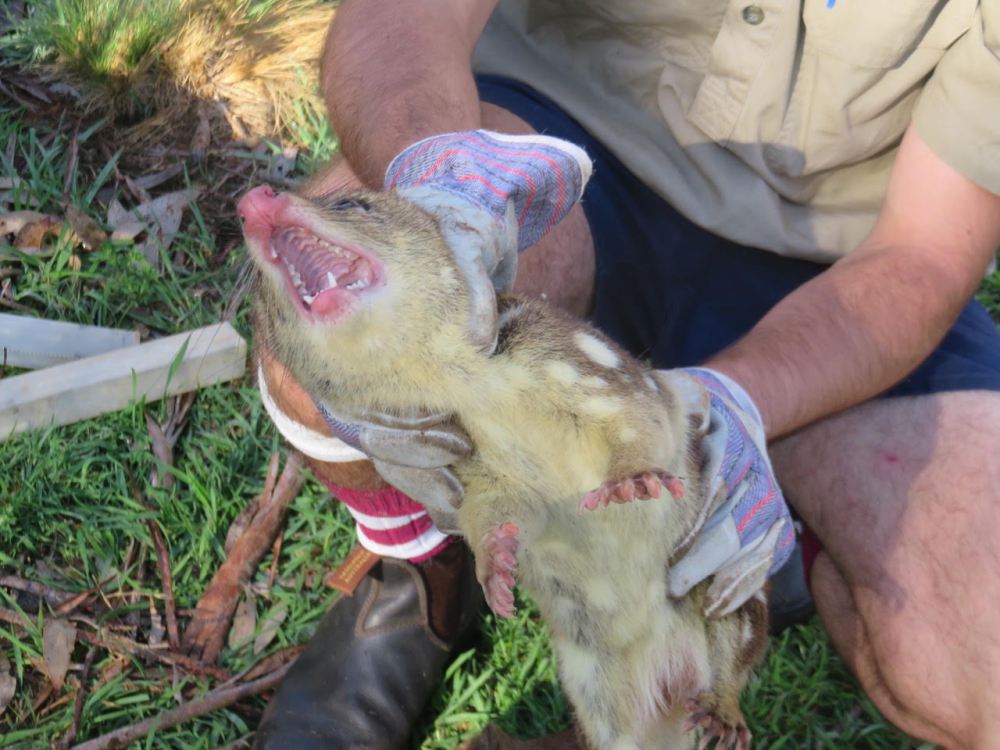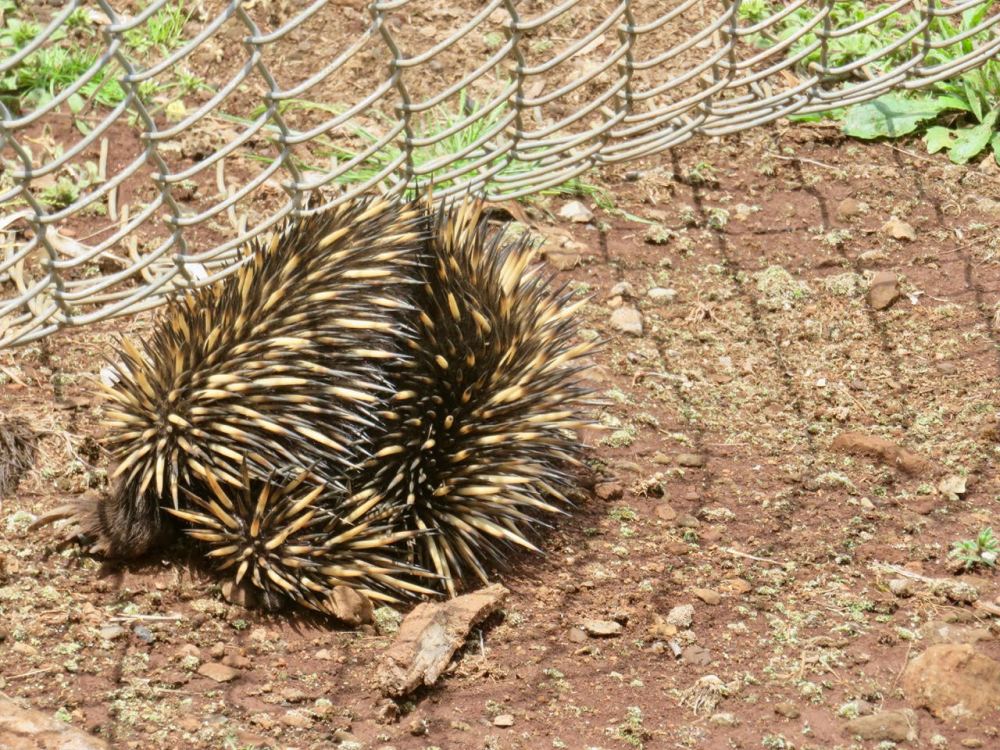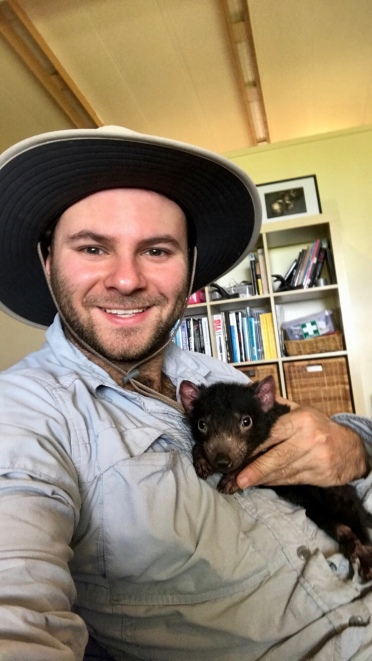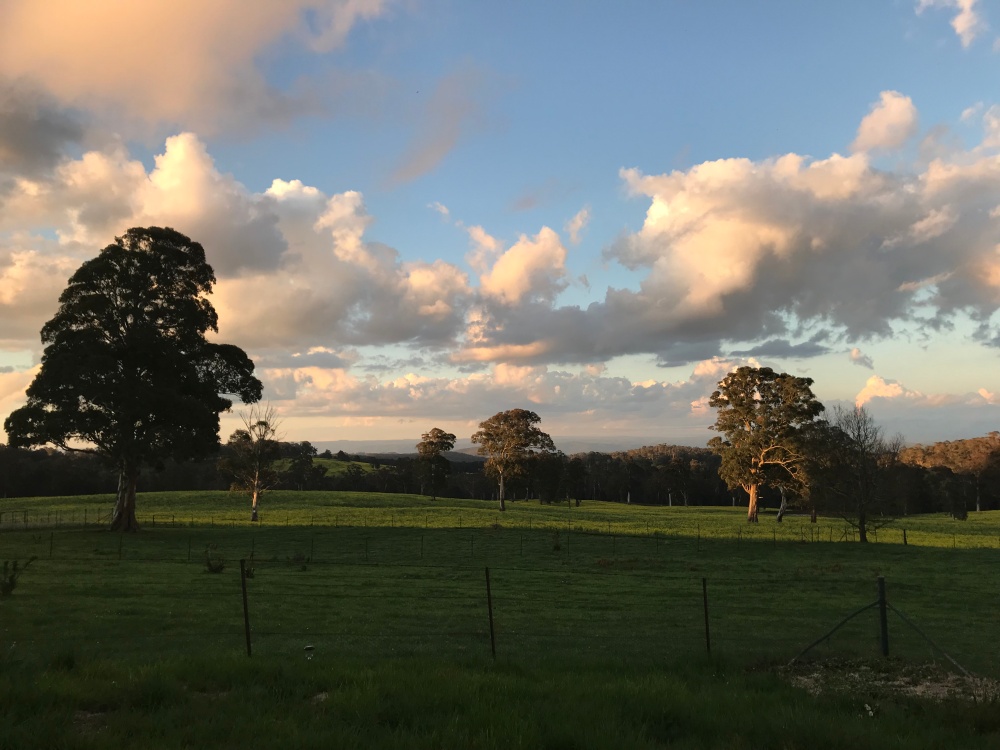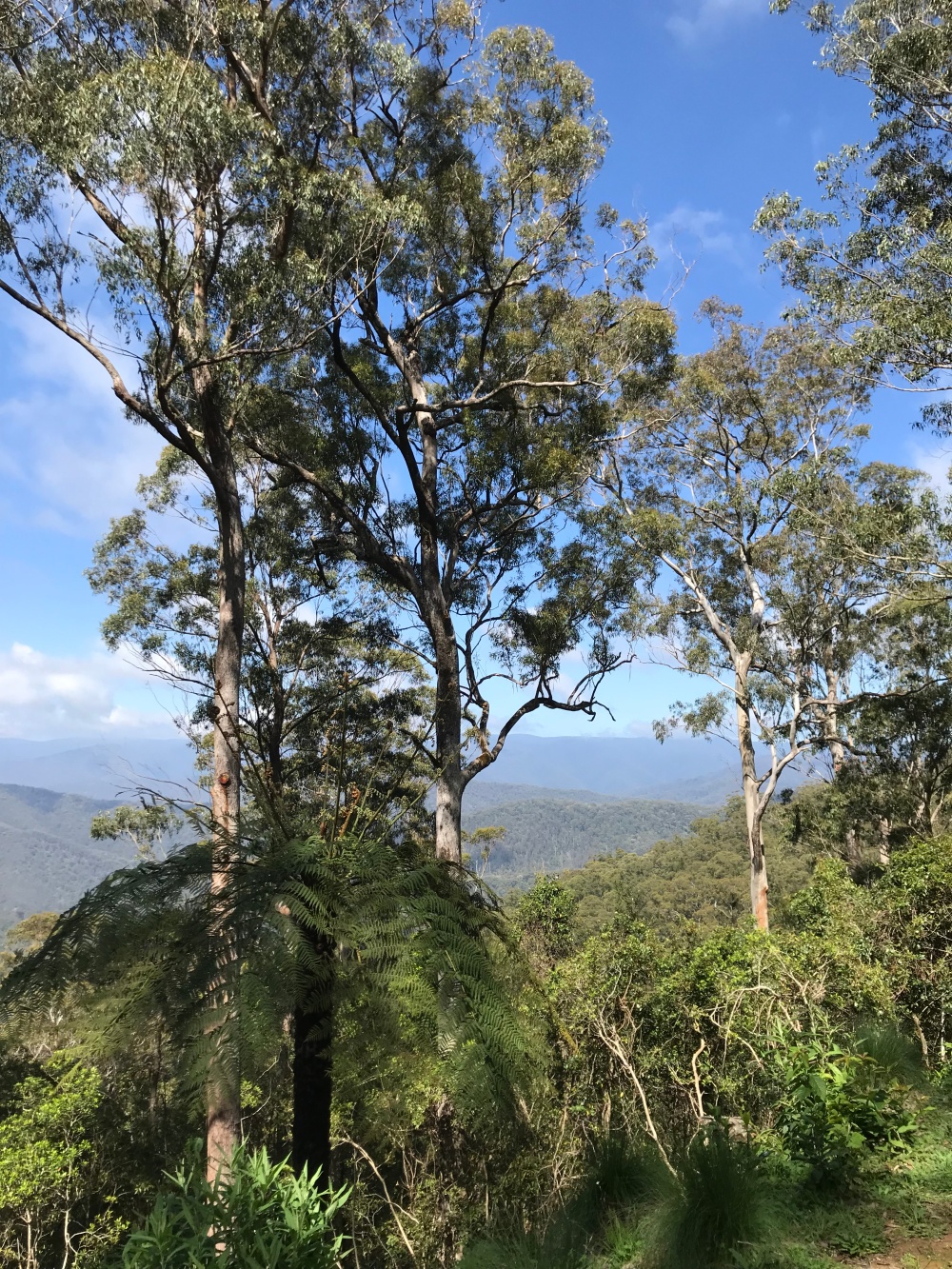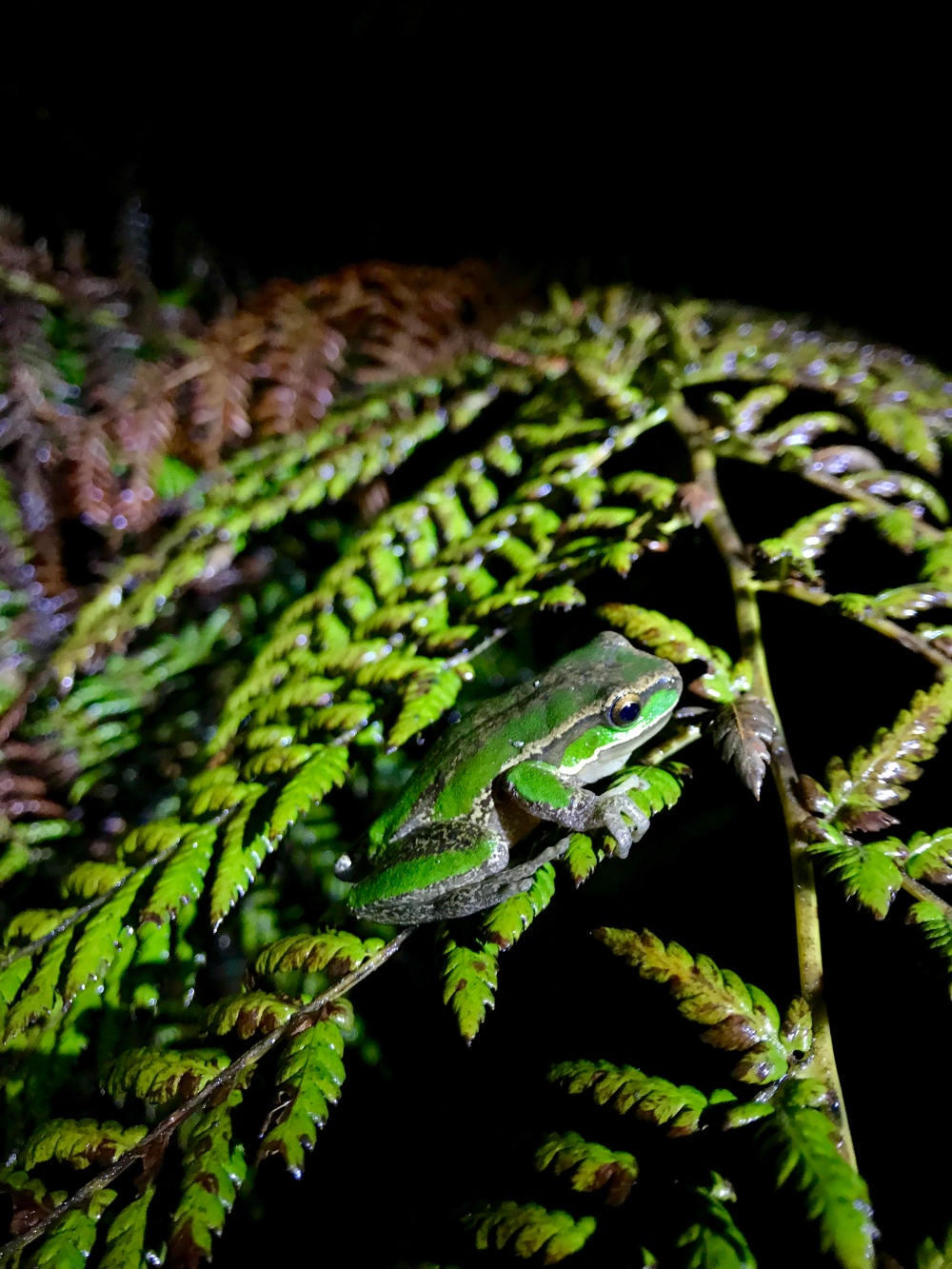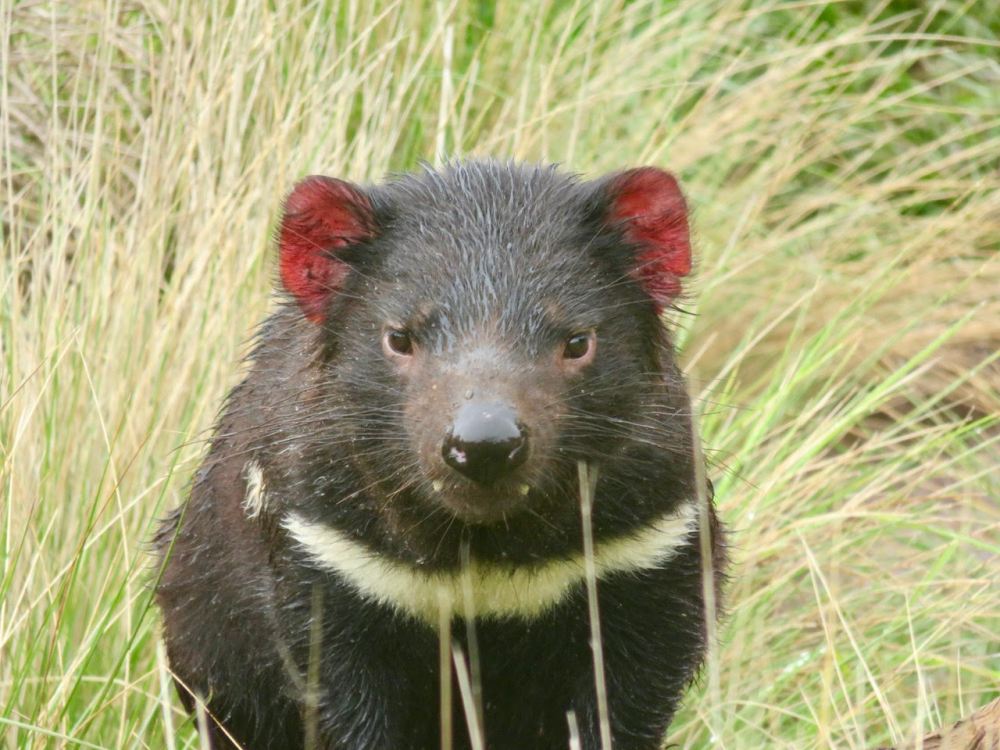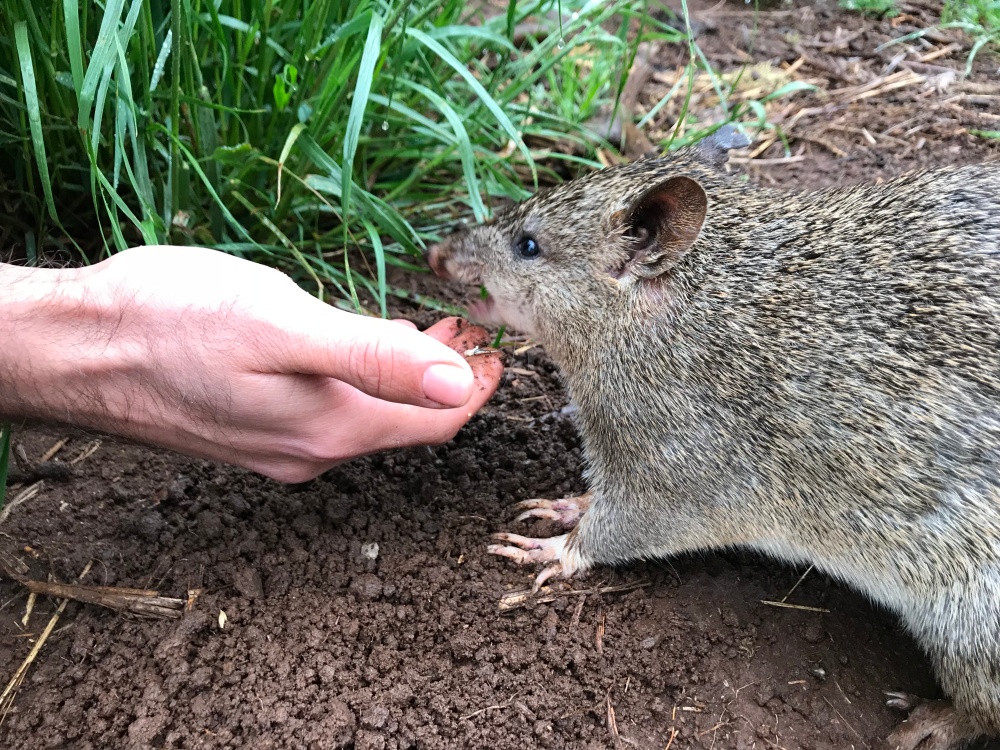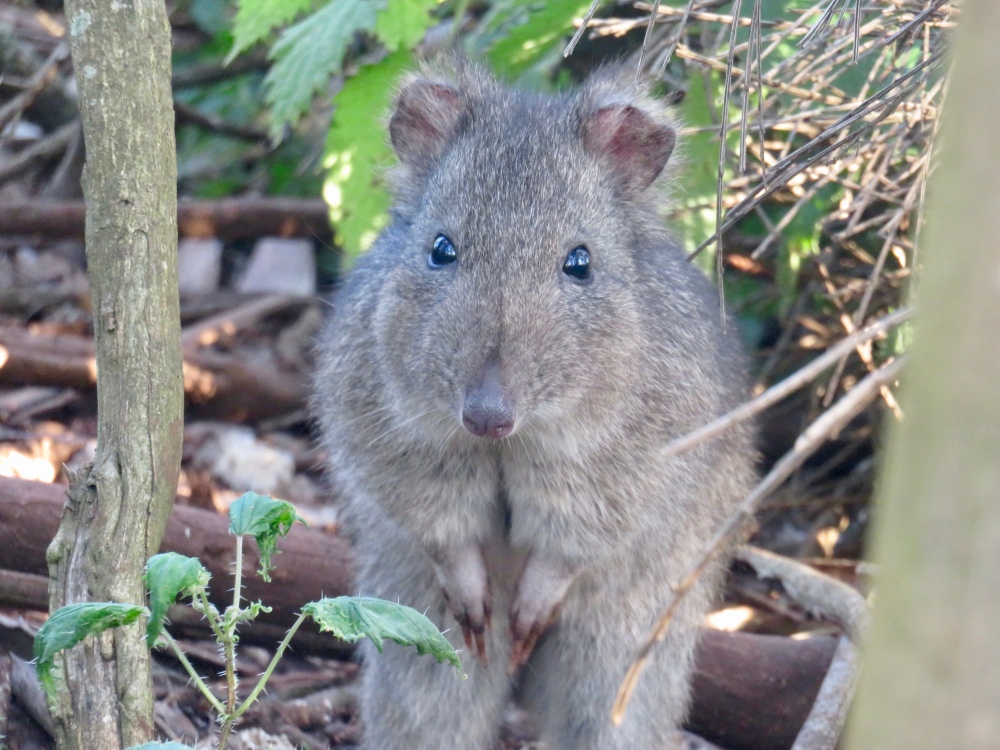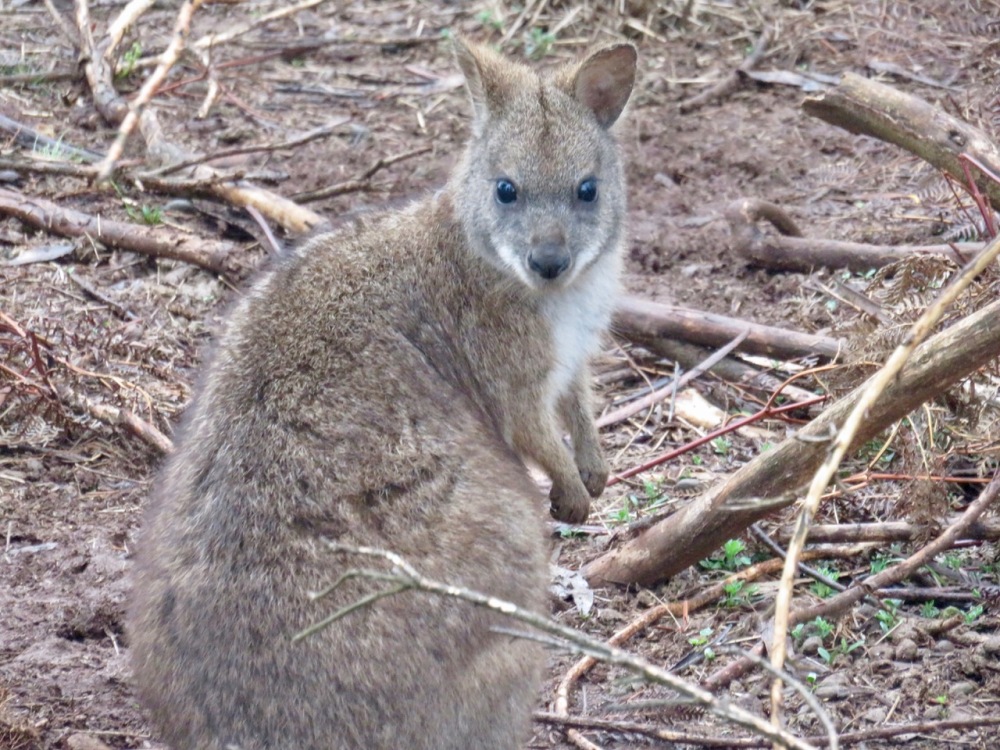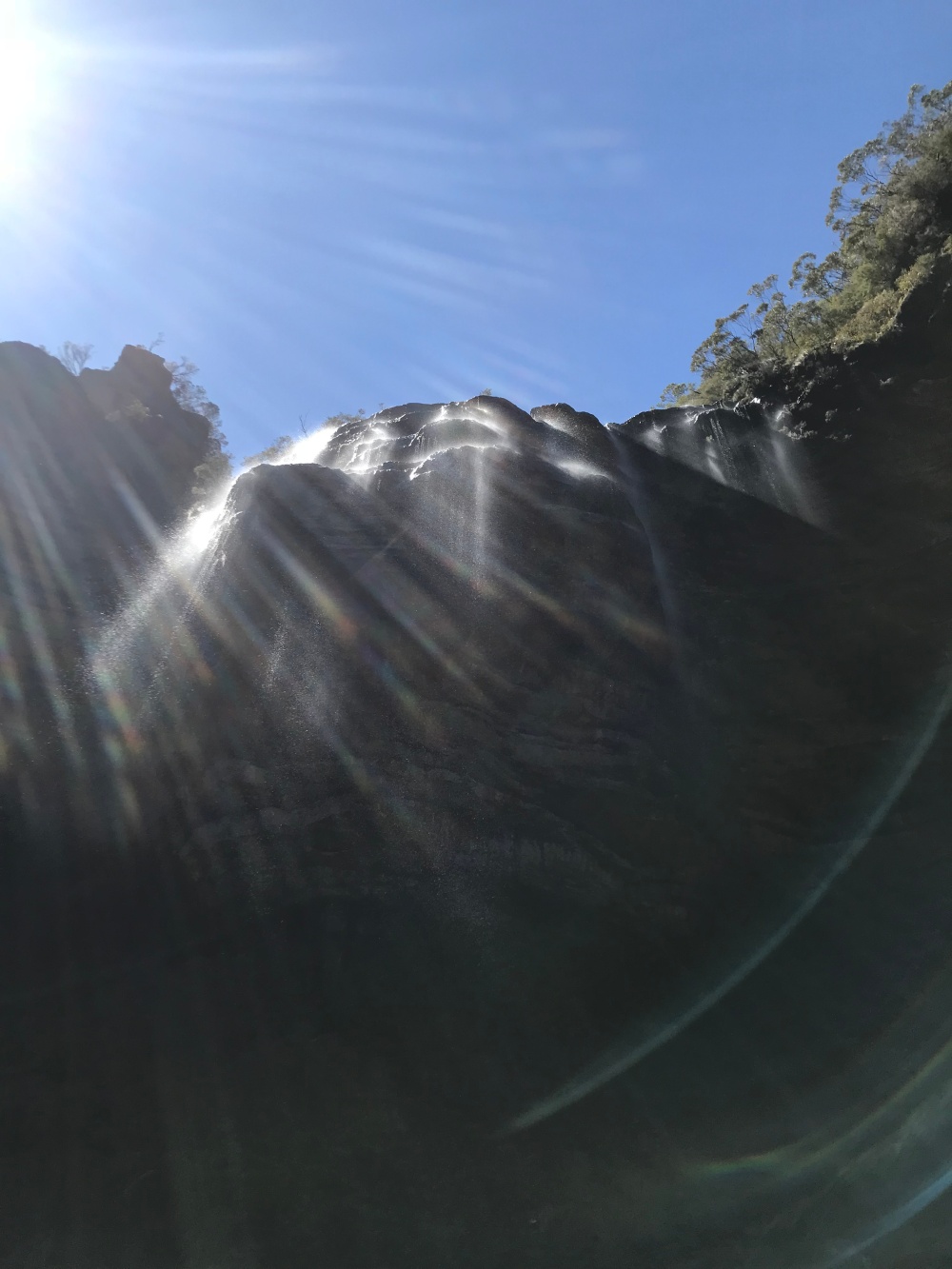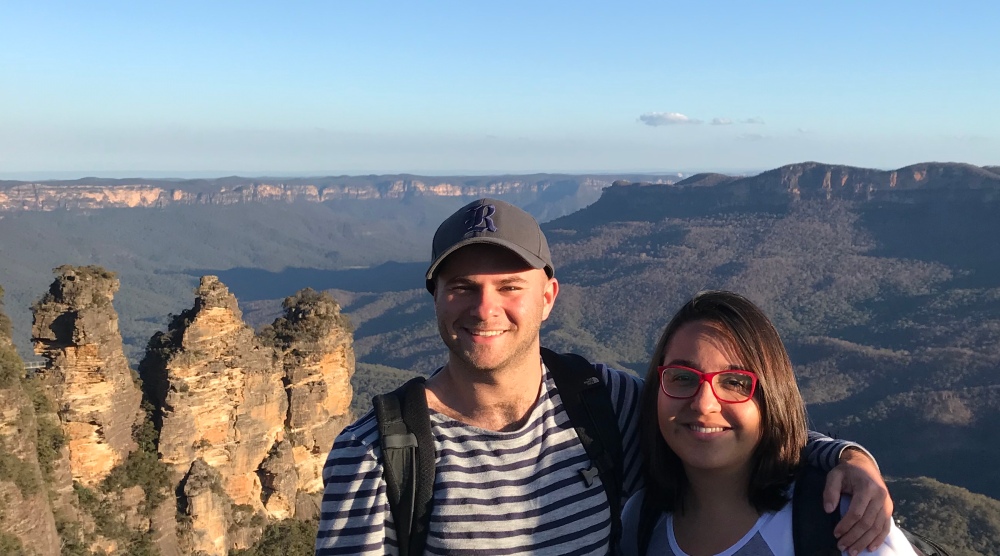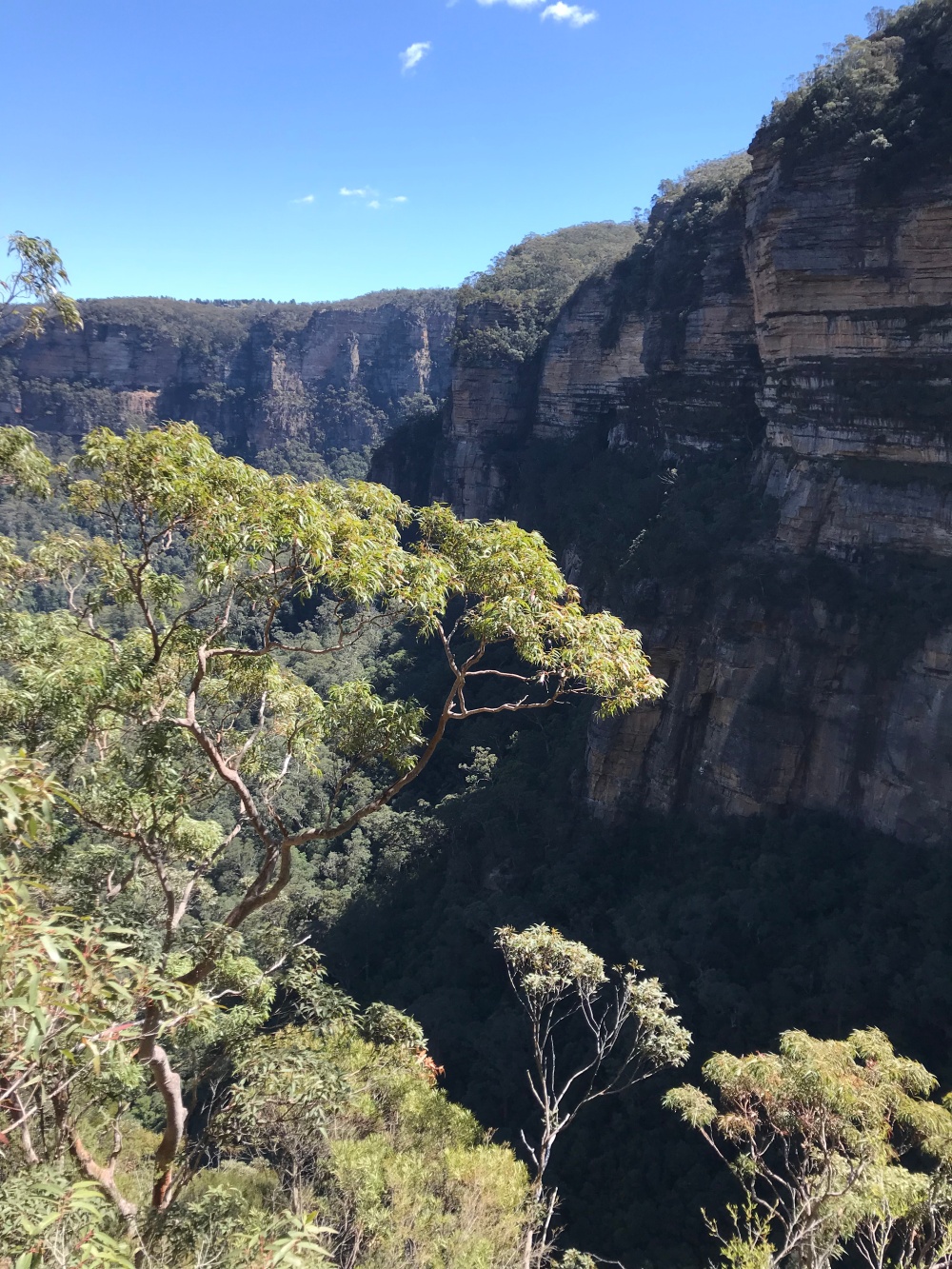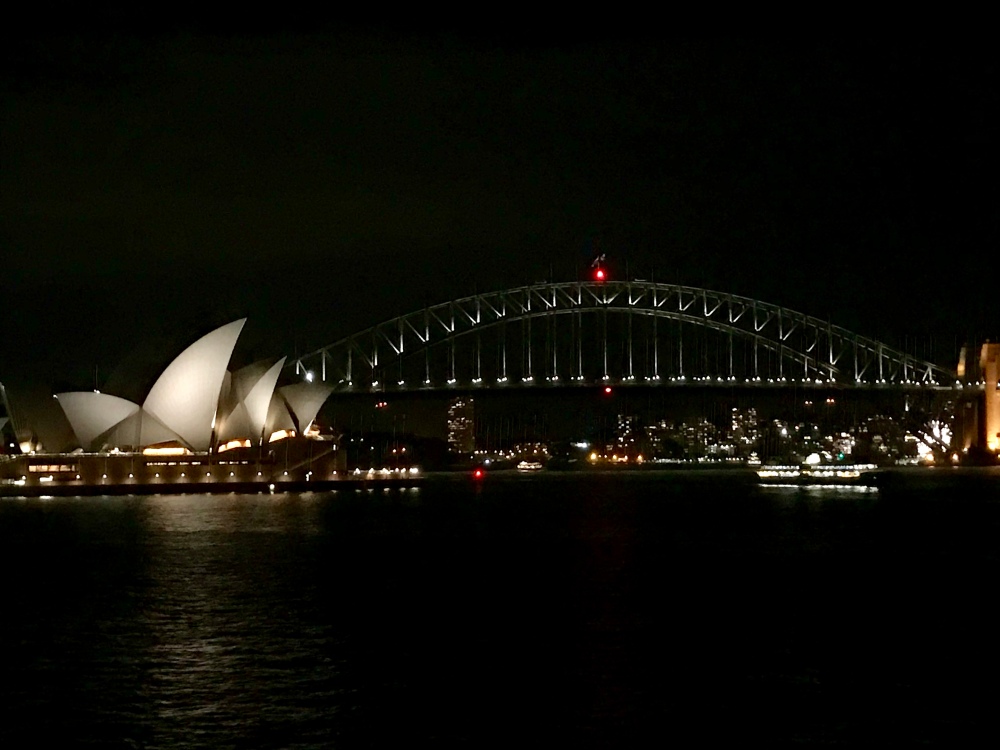Snakes, Ticks, and Leeches Oh MY!
Things are going better this trip! It’s actually fun catching lots of animals, and it helps that we have a third volunteer. I feel bad because I don’t really want to work/am pretty unmotivated as the project isn’t along the lines of my interests and I feel like all the work may not be worth it. I want to focus on the quoll reintroduction for majority of the research, as that’s where my motivation is and I wasn’t able to satisfy it. However, the third volunteer is a big help. Her name is Amoi and she has really shifted the not-so-great dynamic Matt and I had. She is very helpful and encouraging and calls Matt out when he’s not explaining things well or not being very understanding.
I’m getting better at 4WD too which is scary, but fun. We also saw a spot tailed quoll in the morning one of the traps, a big boy hissing and running around the cage. We released him near a wombat burrow and he went scrambling down the hole!
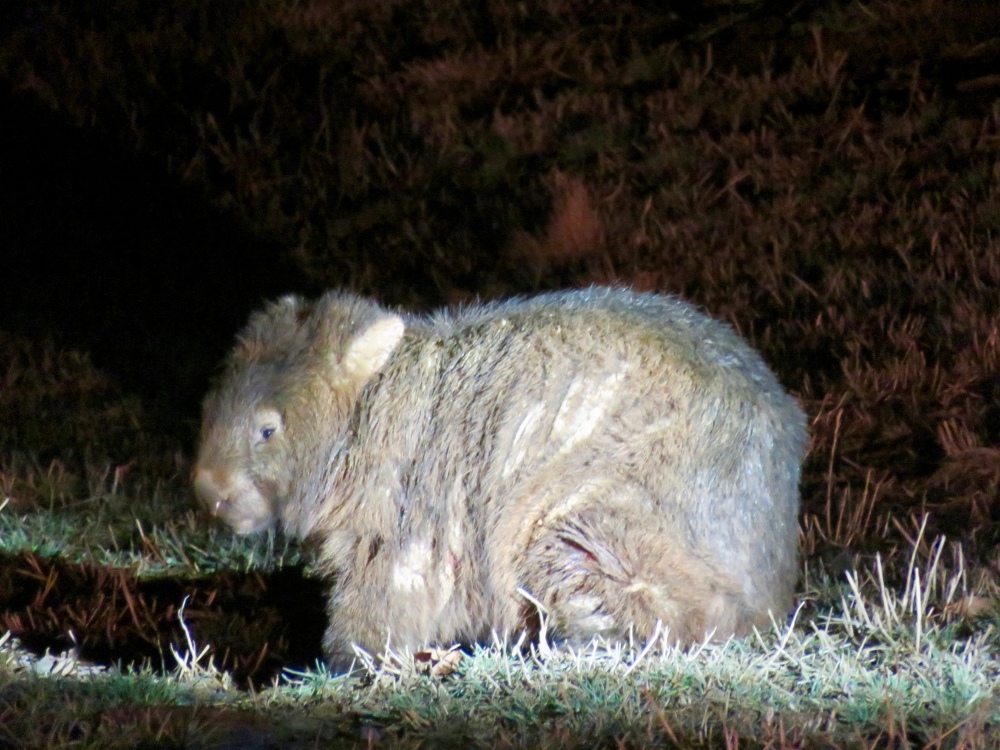
A common wombat. They run surprisingly fast when spooked for something that wombles so slowly along the road.
The best part has been the spotlighting, where I saw my first (three!) wombats! They are so cute and waddle along the road, but when they run off they can really move! One let us get so close that we could almost touch it on approach, then it bolted across the road. I was so upset when I hit the wombat during my first ten minutes driving at night in the field that I spiraled into depression until the next day. I was happy by evening though after a long afternoon setting up traps for the antechinus.

An antechinus, the marsupial that we caught over 100 individuals of during the February-March trip!
There were many possums and greater gliders at the site with their bright orange eyes. The possums just freeze in the bright torch light with their pig-like noses and big fluffy tails. They are more closely related to other marsupials than the possums in the US.

A common brushtail possum we captured. Matt let him go because they are too difficult to handle
To end the night, Matt heard the sound of a sugar glider knocking on wood. I sprinted over to find the little creature perched up in a tree. Its wing flaps were visible as it turned its head away from the light. They are very cute and we watched it in awe as it sat still.
We tried to do spotlight surveys again and got stuck in a hailstorm. It was scary and the tree fall was bad, so we cleared the road and had to chuck sticks away while Amoi did a good job of not killing us with the car as she followed along.
I was inspired by flocks of birds and kangaroos to start doing videos of myself in the fielD. I loved seeing the yellow tailed black cockatoos this morning up close. They are so cool and could approach within 5m!
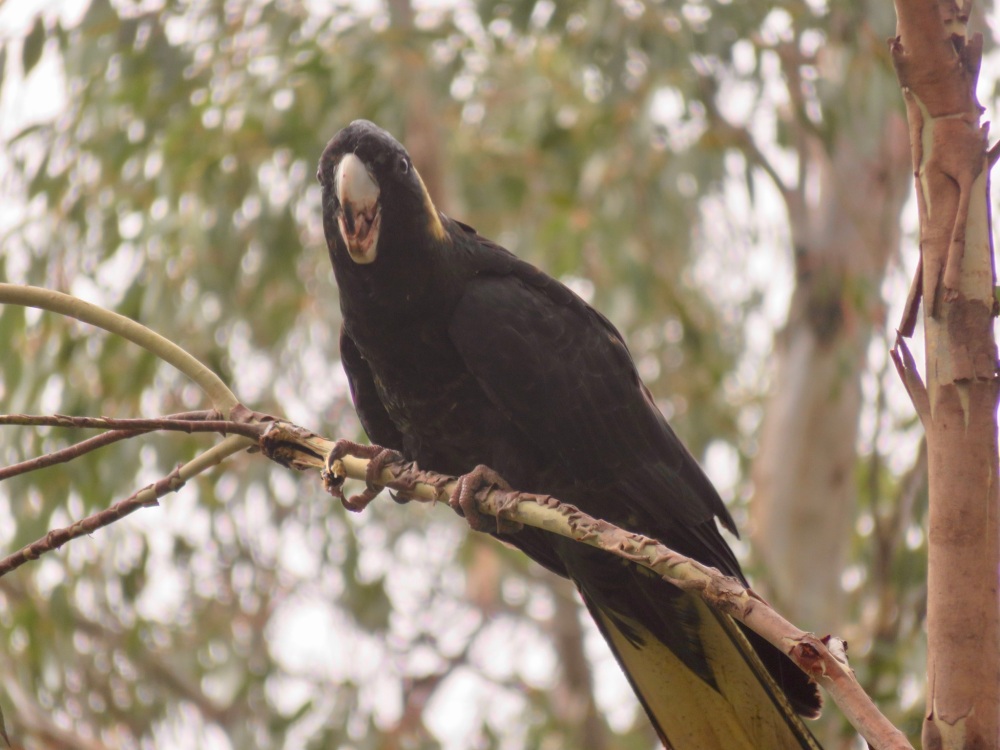
A Yellow-tailed black cockatoo keeping us company as we checked traps for possums and quolls

A Red-necked wallaby. I started a side project tracking how close I could get to them before fleeing as a way of measuring their responsiveness to predators (like humans!)
We caught lots of Antechinus one morning, and boy are they are fun to play with! We put them all in a bag then released them at the same time in a mass exodus of cuteness.
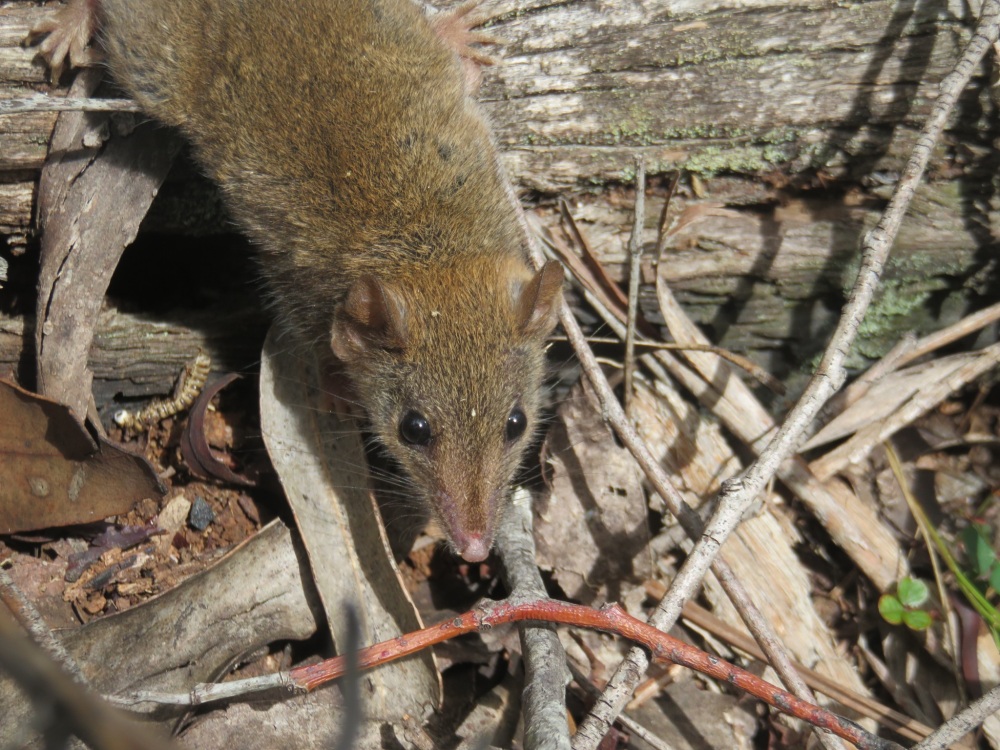
An antechinus frozen after being released on a nearby log
Food in the field: I really am happy hereafter a 8 hour sleep, productive afternoon inside, healthy egg breakfast and lunch, and no processed snacks! And the view from the house is beautiful. We even had a delicious gnocchi dinner!
We took a day trip to Scone (and had some tasty scones!) and I got to practice driving over some steep curves. The cold mountain air is very stark, and we took a jacket out as we stopped at a wetland heath. Matt, Amoi and I explored a bit by going to lookouts, wetland heaths with grass that flowed like waves across the green sea. We took a birding break at a beautiful lookout, and Matt insists he saw a rare Rose robin. I just love looking at all the common birds, like rosellas, fan tails, and cockatoos.
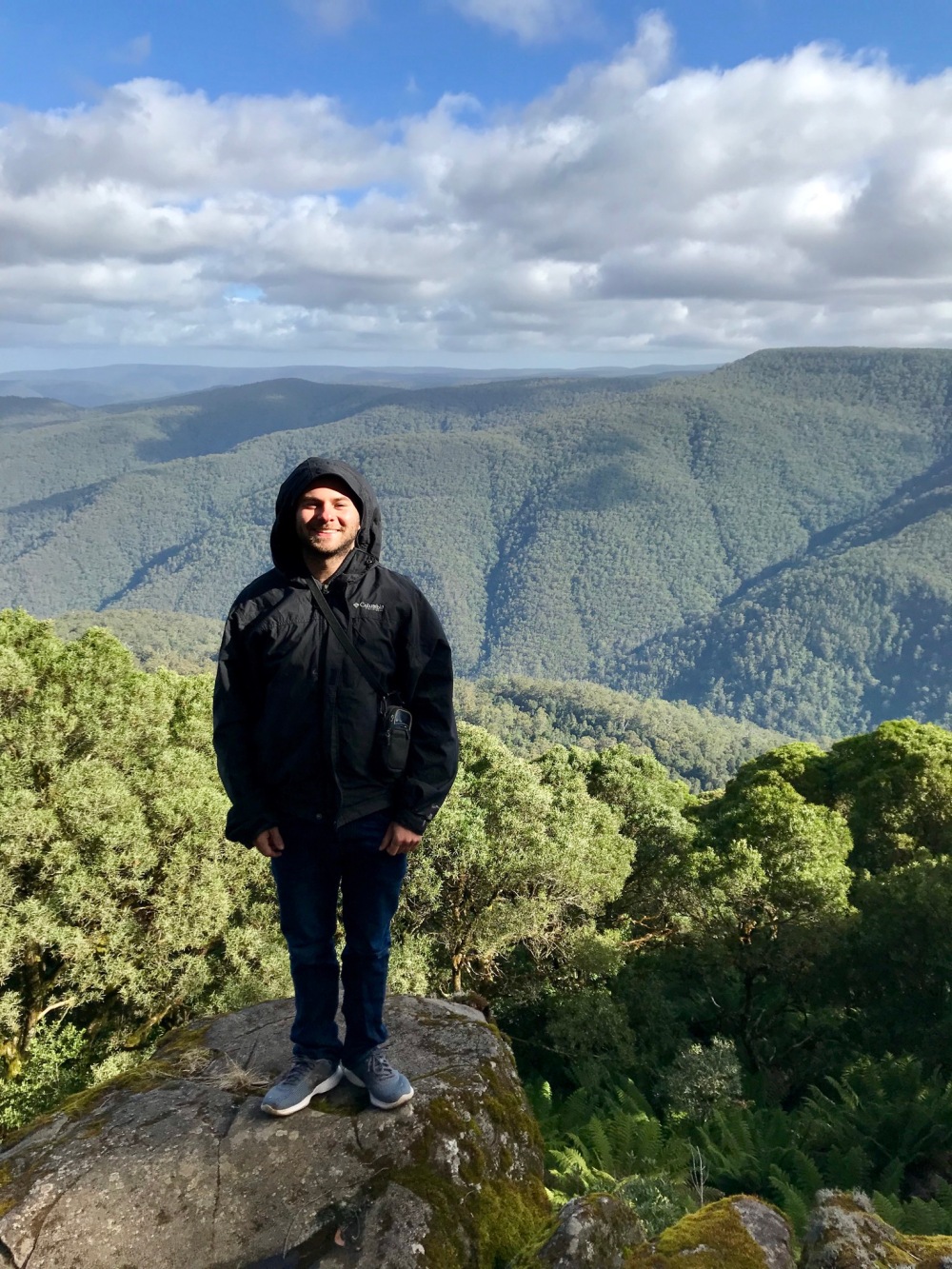
My favorite lookout at Barrington Tops National Park!
On the last day of collecting camera traps, Matt almost stepped on a snake. It turns out there were two, in the middle of having sex. They were going at it in the sun while we were checking traps. The penis appeared stuck in vagina, so she pulled the male away towards the burrow still attached. The 3m long conglomeration of snakes appeared like a two headed serpent, as the female pulled the male back towards the log.
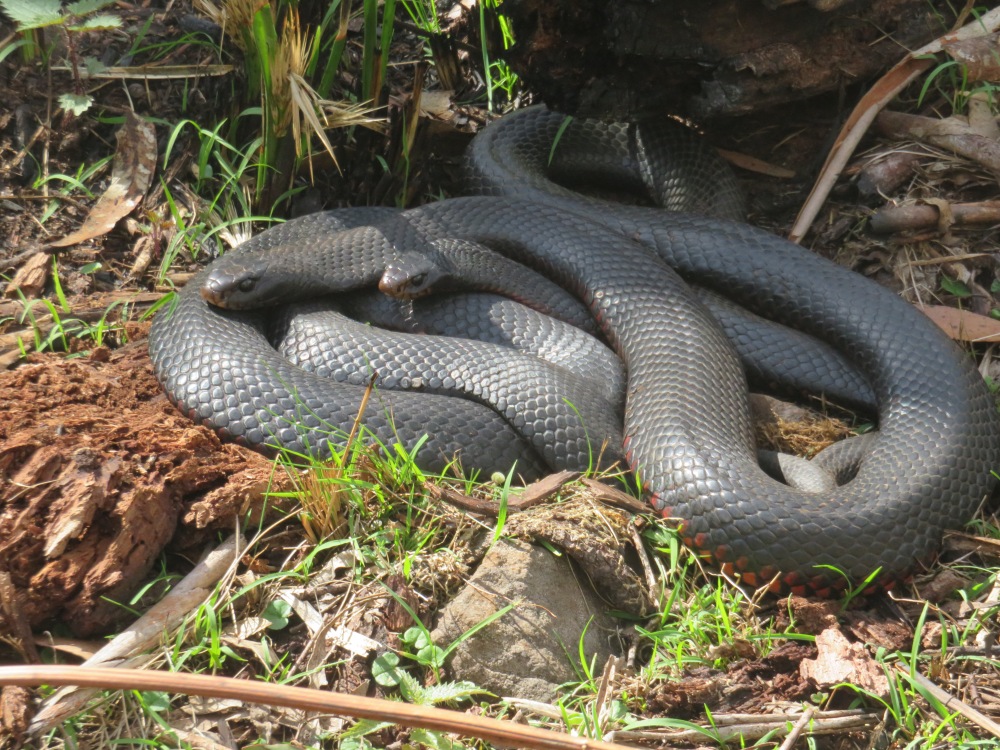
Red-bellied snakes in the midst of mating
Throughout the state forest, there were also lyrebirds! We went in search of them as Matt and I got devoured by leeches, which are 2 in long and suck for 3 hours, swelling up like a water balloon. I also got a tick bites, which Matt said not to worry about, but I ended up getting a strange rash between my hip and my groin. To be continued….
Update: It was a parasite infection! Because of this strange illness, I had trouble sleeping and there were even some behavioral changes. With some holistic medical treatment the infection cleared right up and I went back to normal.

